
Est 1992 June 2024 FREE PUBLICATION LIVE WELL AGE WELL M L MODERN HEALTH AND LIVING H Employment Opportunites Summer Bliss Health Feature Ultimate Fitness and Nutrition Guide Retirement Lifestyle











For more information, please visit teethinplace.com InPlace Comprehensive Treatment Options exclusively feature the LOCATOR ® Attachment and other products from ZEST Anchors LLC. Call today for a consultation. Never worry about your loose dentures again. Stop trying to hold your dentures in place with messy adhesives. InPlace™ will allow you to secure your teeth and say “goodbye” to adhesives forever. Visit our dental practice and discover how life-changing and affordable implant-retained overdentures can be. TIRED OF THE GOOEY MESS? There IS a better option. 1469 S. 70th St | West Allis, WI 53214 (414) 383-5833 wisconsinsmiles.com



And just like that, summer has arrived. June is the month I take a breath and settle in to my much needed, everyday morning, afternoon and evening walks. I hear a lot from my hometown residents that they see me walking around all over town. I love it so much that sometimes I need it twice a day. It’s part of fitness routine for sure, but it is also much needed for my mental health. I would say this is my summer bliss. I hope you have a routine that hits your body, mind and spirit.

I want to give some well deserved praise to my daughter Mallory who took first place in regionals, topped in sectionals, and moved on to making the 2024 State Track & Field Championships. Her coach mentioned at her banquet that she was the first pole vaulter that had made it to state as far back as he could find for Cedarburg High School. Now both of my children are state athletes and hoping for more fun competitions to watch. Let’s go Bulldogs, Let’s go Titans!
Welcome to our Summer Health Edition. I wanted to pack the issue with fitness, nutrition, and other articles that lead to a healthier happier summer. Stay Healthy!
JUNE 2024 EDITION



Oak Park Place offers Assisted Living and Memory Care with all the features you expect in a place to call home.
The Ommani Center, Livestrong.com, Environmental Nutrition, Nutrition Action Health Letter, Columbia/St. Mary’s, Ascension, Eye Care Specialists, Aurora, Alexian, Eye Physician Associates, Brothers Village, Ye Olde Pharmacy, NIH, Jensen Health and Energy, Foot Solutions, Allergy and Asthma Centers, Tudor Oaks, Active Care Rehab, Greensquare Center for the Healing Arts, Midwest Audiology, Integrative Family Wellness Center, Universal Services, American Camp Association and Home Instead
For information on advertising or to submit articles call, 414-659-6705 or 608-237-6000, or email mhl@wi.rr.com.
Subscriptions are $20 per year. Thanks for reading MHL.
MHL is published on the first of each month . The articles in this publication are in no way intended to replace the knowledge or diagnosis of your doctor. We advise seeing a physician whenever a health problem arises requiring an expert’s care.










Individualized services, life-enhancing amenities, and compassionate, professional staff are the foundation of all we do.

Choose from a range of spacious studio and one-bedroom apartments with assistance available from staff 24 hours a day, every day.










Independence when you want it, assistance when you need it. Oak Park Place.





We’ll help you every step of the way.
















all the local professionals that provide us with articles containing new information
keeping all our readers informed of the latest in healthy living. Lewis Media Group Amanda Lewis Malberry Media Tom Delgado Barry Lewis publishers editor graphic design advertising disclaimer Lewis Media Group | www.modernhealthandliving.com thanks contributors contact staff MHL STAFF images distribution manager travel editor founder Jerry Kornowski Marlys Metzger Barry Lewis 123RF.com, Istock.com Amanda Lewis
Special Thanks! To
and
June 2024 MHL � Editor’s Note financial your protecti incur supplement and Their $150 Advantage save nearly for the product so working insurance and they best term would her similar she representative, care suggestions to mail of do situation, current and Sherry Baggerley Call (262) 523-1440 today. Call (262)844-4752 today.
State Bound Est 1992 June 2024 FREE PUBLICATION LIVE WELL AGE WELL M L MODERN HEALTH AND LIVING H Employment Opportunites Summer Bliss Health Feature Ultimte Fitness and Nutrition Guide Retirement Lifestyle 1621 Rivers Bend, Wauwatosa, WI 53226 www.OakParkPlace.com/Wauwatosa how will you spend it?
Call 414-292-0400 or email wauwatosasales@oakparkplace.com.



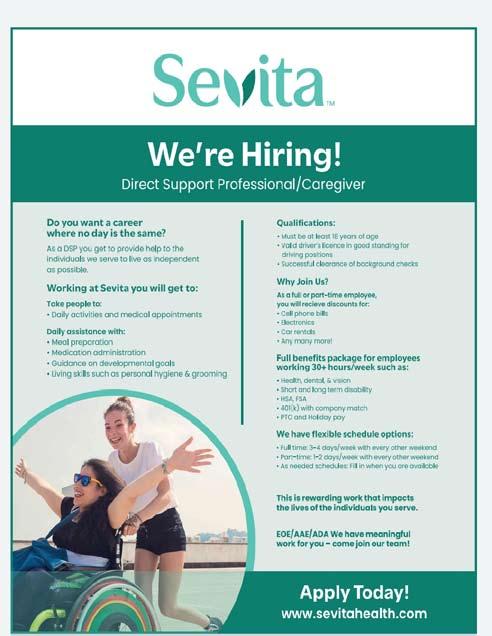
We are looking for strategic thinkers, team players and leaders who align with our purpose of improving the health and wellbeing of those we serve
Our work focuses on crea ng meaningful connec ons with each of our clients, helping them to move to ward a healthier lifestyle. We assist each individual’s journey by helping to uncover root causes of their health concerns through holis c natural health and wellness advocacy.
If our purpose resonates with you, we invite you to explore career opportuni es and apply today.


*Full me or part me (at least three days a week as client load builds). $35/hr, up to $40hr maximum. Qualifica ons: Must have a passion for natural health. Background in Nutri on preferred Willing to train the right candidate



Health Employment Join our Team! Hiring!We are $25 $26 $30 $43 $35 $40 Apply at vmpcares.com C.N.A Medication Tech Nurse Tech Respiratory Therapy LPN RN OPEN POSITIONS: Starting Wage/hr. for Full-Time Employees OR SCAN HERE:
Join our team of holistic health practitioners
MENOMONEE FALLS AND NEW BERLIN WHO UNDERSTAND THAT HEALTH IS PERSONAL SEE WEBSITE TOTALHEALTHINC.COM FOR MORE INFORMATION CLINIC@TOTALHEALTHINC.COM Send re sume to:

8 Exercises to Reduce Stress
Did you know April is Stress Awareness Month? It’s a great time to look inwards at how stress may be affecting our own physical and mental health. In the United States alone, more than 75% of adults have reported experiencing physical and psychological symptoms due to stress.
There are a lot of different habits for managing stress, and one important part of that is physical activity. Talk to your doctor about stress management techniques and ask them if adding more physical activity is a good idea for you. If you get the ok from your doctor to add more movement in your everyday life, remember, exercises to help reduce stress don’t have to be boring! They can be a fun and fulfilling part of your workout routine. Check out these eight ideas for stress-fighting activities:
Yoga or pilates
Yoga and pilates are two forms of mindful exercise that are both based on controlled movement, stretching, and intentional breathing. Both offer many physical and mental benefits, like increasing your body’s flexibility and strength. And when you’re focusing on your breath and body movement, it helps draw your focus away from stress-inducing thoughts.
Martial arts
Martial arts such as karate, jujitsu, and taekwondo are excellent forms of physical activity that typically incorporate mindfulness and meditation techniques to help you process emotions like stress. The focus and discipline required in martial arts training can promote a sense of control and empowerment, while the social aspect of martial arts training can loop you into a supportive community. If you’re less interested in fighting-focused options, look into tai chi — it’s probably the gentlest form of martial arts!
Swimming
If you’re looking for a full-body workout that feels relaxing and easy on the joints, swimming is the perfect option. The weightlessness of the water helps take the pressure off your joints and muscles, while the rhythmic and repetitive motion of swimming can be meditative. Many people also find that cool water and the sounds of the pool or ocean can be soothing, helping to calm the mind and reduce anxiety.
Team sports
Participating in competitive sports can be a great way to reduce stress. Not only does it require skill, focus, and concentration, but it also encourages people to communicate and work as a team, building camaraderie and friendship. (Having strong social connections comes with health benefits too!) Plus, it’s a great way to push yourself to be physically active and stay motivated.
Thanks to all these factors, one study showed that team sports might be the best form of exercise for stress relief! See if you can find a local group for tennis, pickleball, or another sport of your choice.
Bike riding
Dust off your old bicycle and take it in for a tune-up! Cycling gives you an opportunity to get out into the fresh air, and it’s a low-impact cardio activity that gets your blood pumping. If you’re new to riding a bike for exercise, check out our quick-start cycling guide. We have tips on choosing a bike to buy, getting safety equipment, finding bike trails, maintaining your bicycle, and more. Riding a bike is shown to be one of the best exercises for mental health!
Walking or jogging
Walking or jogging is an excellent form of exercise for people who want to
STRESS>>page 47
The CapTel® Captioned Telephone shows word-for-word captions of everything a caller says, letting you read anything you cannot hear over the phone. CapTel is a NO-COST, federally funded technology available under the Americans with Disabilities Act
To qualify, users need: • Hearing loss • Internet connection
• Landline telephone service

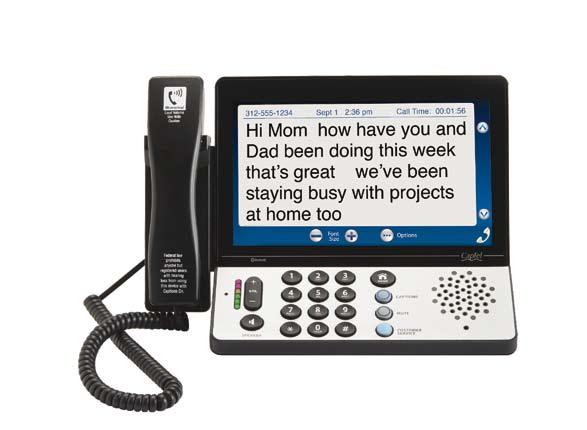

June 2024 MHL � Wellness LIVE WELL
FEDERAL LAW PROHIBITS ANYONE BUT REGISTERED USERS WITH HEARING LOSS FROM USING INTERNET PROTOCOL (IP) CAPTIONED TELEPHONES WITH THE CAPTIONS TURNED ON. Advanced speech recognition software is used to process calls, and, in certain circumstances, a live communications assistant may be included on the call. There is a cost for each minute of captions generated, paid from a federally administered fund. No cost is passed on to the CapTel user for using the service. CapTel captioning service is intended exclusively for individuals with hearing loss. CapTel® is a registered trademark of Ultratec, Inc. The Bluetooth® word mark and logos are registered trademarks owned by Bluetooth SIG, Inc. and any use of such marks by Ultratec, Inc. is under license. (v1.7 01-23) Can’t
Get a NO-COST CapTel Captioned Telephone Several phones to choose fromfor landlines, Internet phone, or mobile 800-233-9130 CapTel.com
Hear on the Phone?

Workout Mistakes That Lead to Weight Gain
We all know that exercise is essential for a healthy life. But did you know that if you’re hitting the treadmill or lifting weights primarily to shed a few pounds, you might be doing yourself a disservice? Miranda Kay RN, Medical Editor at Nursa, observes,
“Exercise and diet are like two wheels on a bicycle – they both have to be working in harmony to get you where you want to go.”
Turns out, your favorite workout might be secretly undermining your healthy eating efforts. Here’s how:
•Cardio Overload: Many believe that doing more cardio equals better results. However, focusing solely on cardiovascular exercise can backfire. According to Fit Factory Club, your body may start burning muscle for energy, slowing down your metabolism and making fat loss more challenging.


•Waist Trainer Woes: Celebrity-endorsed waist trainers promise to sculpt your body, but they often fail to deliver long-term results. They can harm your organs without providing any lasting benefits for weight loss or body shaping. It’s best to steer clear of these trendy but risky devices.
•Extreme Calorie Cutting: Some people resort to extreme calorie-cutting diets paired with intense workouts to lose weight quickly. However, as per News Medical, this approach can lead to nutrient deficiencies, muscle loss, and a slowed metabolism, making it harder to maintain weight loss in the long run.
•Over-Reliance on Spot Training: Targeting specific areas for fat loss, such as endless crunches for a flat stomach or countless arm curls for toned arms, may not be as effective as overall strength training and cardio for overall fat reduction and muscle tone.
$0 Monthly Plan Premiums with Dental, Vision and Hearing
Exercise LIVE WELL June 2024 MHL �

Get Fitter and Stronger With the Ultimate Guide to Strength Training
You can build muscular strength with just your body weight, but a few pieces of strength-training gear can take your resistance workouts to the next level.
Livestrong.com may earn compensation through affiliate links in this story. Learn more about our affiliate and product review process here.
Gone are the days when strength training was just for bodybuilders and pro athletes. In fact, the Physical Activity Guidelines for Americans from the U.S. Department of Health and Human Services recommend that all of us should strength train at least twice a week.
Our goals can still differ plenty over those two (or more) weekly strength sessions. For some people, strength training is all about sculpting enviable muscle tone and size to show off in gym selfies. For others, it’s about building balance, improving mobility or having an easier time heaving a carry-on suitcase into an
overhead compartment.
No matter your aim with strength training (also known as resistance training), the key concept remains true: To get stronger, you need to put a load on your muscles. That stimulates them to adapt and become stronger, especially as you increase the load or resistance over time.
The best part: While resistance bands, dumbbells, kettlebells and barbells all up the intensity of strength-training workouts, you can challenge yourself plenty with just your body weight. Here, find all the convincing evidence on the importance of strength training and how to get started.
The Many Benefits of Strength Training
The benefits of strength training extend far beyond the changes you’ll see in the mirror.
Experts don’t recommend lifting weights at least twice a week because we should all aspire to bulging biceps or chiseled abs — although strength training can and will change the appearance of your muscles. Instead, that suggestion comes from all the additional benefits of resistance training, like a healthier heart, higher self-esteem and better performance on the soccer field, basketball court or track.
“Moderate levels of strength benefit almost any activity, whether athletic or part of everyday living,” says Jason Li, CPT, personal training manager at SoHo Strength Lab in New York City. “Name any activity and strength training will most likely be beneficial in some way.”
Seeing athletes at the top of their game pumping iron can make strength training seem intimidating for beginners. But you don’t need a lot of equipment or a laundry list of exercises; most trainers will make sure you don’t overcomplicate your workouts, especially in your first few sessions.
The best place for beginners to start is with a combination of body-weight and dumbbell moves (more on both below!) and a solid foundation of basic tips on safety and technique.
Here’s exactly how to get started with strength training.
How to Strength Train at Home
Consider investing in two different weights of dumbbells for at-home strengthtraining workouts.
Many people picture an unwelcoming weight room tucked in the back of a gym when they think about strength training. While we believe in finding a gym
TRAINING>>page 43
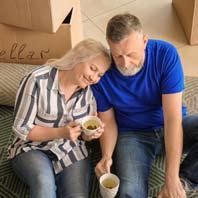

� MHL June 2024 Fitness LIVE WELL







Knee Pain Sufferers

End knee pain without dangerous drugs or surgery. Breakthrough Treatment has an Astounding Success Rate. There is a new FDA cleared, safe, gentle, and effective therapy for people who suffer from knee pain due to Osteoarthritis, Bone Spurs, Trauma Related Knee Pain, Degenerative Arthritis, and other conditions that lead to Chronic Knee Pain. Revolutionary New Knee Pain Recovery Program Now Available in Southeast Wisconsin!!! Please call our office to schedule your
Our Knee Pain Recovery Program is like no other and is 96% effective for those who qualify.
Yes, you must be pre-qualified to be accepted into our Knee Pain Recovery program. Our doctors will perform several screening tests to see if moving forward to a more comprehensive examination makes sense for you. If you are serious about getting out of pain and restoring the function of your knee, then we need you to call our office today to get evaluated by one of our board-certified knee pain specialists.
Have you tried cortisone shots? How about PRP injections? Physical Therapy? Stem cell injections? Or worse a surgical procedure? BEFORE







These spots fill up fast – Call Today 262-785-5515 REGEN MED PAIN RELIEF CLINICS RELIEVE - REGENERATE - RENEW A TRADITION OF TREATMENT EXCELLENCE FOR OVER 30 YEARS Offering MLS Laser Therapy since 2011 Schedule Your 30 min. COMPLIMENTARY CONSULTATION REGEN MED PAIN AND YOU ARE STILL HAVING KNEE PAIN!?! • Affordable • Rapid Results • Safe • FDA Approved Medicare Approved, and Covered by Most Insurances. Finally,
Fast
with
NEW Non-Invasive, Non-Surgical Knee Pain Treatment
You Can Experience
Relief
a
Pre-Qualifying
Complimentary
Assessment Today! 262-785-5515
UP ON YOURSELF. . .
YOU GIVE
15720 West National Ave., New Berlin www.regenmedpainrelief.com



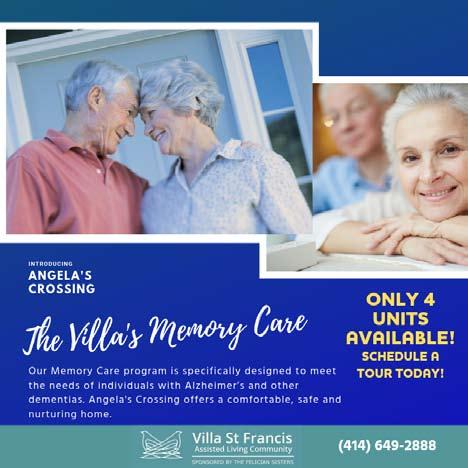

Ten Overrated Restaurant Items
Not all “healthy” restaurant meals are created equal. When dining out, protect yourself from being deceived by incorporating these tips from a nutritional expert for TOPS Club, Inc. (Take Off Pounds Sensibly), the nonprofit weight-loss support organization. Investigate, ask your server how items are prepared, and look at the restaurant menu’s nutrition information online in advance, if available. With a bit of planning, your diet doesn’t have to be derailed.
1. Salad - A plate packed with dark leafy greens, vegetables, and even fruit can be very nutritious. Avoid salads featuring heavy dressing and cheese, which easily adds on extra calories and fat.
2. Fish - Baked or grilled fish with lemon is an ideal choice, but a fried fish platter can quickly top 2,000 calories. Also steer clear of fish with butter or cream sauces.
3. Smoothies - A blend of low-fat yogurt and fresh or frozen fruit that you prepare yourself in a blender can be a healthy way to start your day. Smoothies found in the mall food court are a quick way to tack on calories, due to the added sugar – aside from the sugars that occur naturally in fruit – the use of full-fat milk, and commonly-found super-sizes.
4. Wraps - Depending on the type of sauce and amount of cheese used, these wraps can top upwards of 1,000 calories. For a healthy wrap, stick with one containing lean meats, plenty of veggies, small amounts of cheese, and no mayo or creamy sauces.
5. Coffee drinks - A regular cup of coffee with no “add-ins” has zero calories and fat. However, many flavored coffee drinks contain more calories than a large burger, due to the cream and flavored syrups added to them. Aim for skim milk, ask for sugar-free syrups, and withhold the whipped cream for a lighter
pick-me-up.
6. Muffins - Many muffins found in bakeries and cafes are equivalent to a piece of cake in fat and calories. Think of these muffins as oversized cupcakes and avoid indulging.
7. Fried veggies - How do you make vegetables unhealthy? Be it sweet potatoes or broccoli, this growing, trendy menu option of frying veggies is a “don’t.”
8. Multi-grain breads/buns - “Multigrain” can often be misinterpreted as being whole-grain. Multi-grained breads contain a variety of grains, but they are often refined, stripped of protein, nutrients, and antioxidants. 100% whole-grain breads are higher in nutrients and fiber and are a more well-balanced choice.
9. Chicken - A grilled chicken breast is a great option until condiments like cheese, mayo, and bacon are added. Top your sandwich with lettuce, onion, tomato, and other veggies, plus a low-calorie sauce or mustard for added flavor.
10. Salad bar - Just because a food item is included on the salad bar doesn’t necessarily mean it’s healthy. Avoid creamy, macaroni-and-peatype salads, and watch the amount of shredded cheese you add. To build a healthy salad, stick to a variety of veggies and lean protein, like meats or hard-boiled eggs, and use light dressing or oil and vinegar.
TOPS Club Inc. (Take Off Pounds Sensibly), the original, nonprofit weight-loss support and wellness education organization, was established more than 63 years ago to champion weight-loss support and success. Visitors are welcome to attend their first TOPS meeting free of charge. To find a local chapter, visit www.tops.org or call (800) 9328677.
10 MHL June 2024
Nutrition LIVE WELL
Health Insurance Life Insurance Annuities LongTerm Care Insurance Auto Homeowners Immediate SR22 Filings Free Quotes 7421 W. Becher St. West Allis, WI We are not limited to representing one company, so we can give you unbiased advice. 414-545-7878 1-800-924-4061 www.AlliedSeniorServices.com Be Confident in Your Coverage.

Road America
The 2024s eason kicks off this Summer. Located in Wisconsin’s scenic Kettle Moraine, Elkhart Lakes’s Road America Inc. is one of the world’s fastest racing tracks. Road America has fun events coming up for all ages. Get to the track!
XPEL Grand Prix Presented by AMR
June 6-9, 2024
The XPEL Grand Prix presented by AMR takes center stage at Road America, as an international lineup of drivers will have their chance to battle it out for glory on one of the world’s most majestic road courses.
The NTT INDYCAR SERIES is North America’s premier open-wheel series, with athletes representing over 11 countries worldwide. The diverse schedule is made up of superspeedways, short ovals, road courses, and street courses that put athletes’ physical and mental strength to the test, reaching speeds up to 240 mph.
The weekend schedule at Road America will also be bolstered by the Radical Cup series and the junior development series’, the INDY NXT Series presented by Firestone, the USF Pro 2000 series, and the USF 2000 series, of which many drivers of the NTT INDYCAR SERIES are graduates.
WeatherTech Chicago Region SCCA June Sprints
June 21-23, 2024
The WeatherTech Chicago Region SCCA June Sprints return to Road America June 21-23, 2024. The June Sprints have been held every year at Road America since 1956. The 69th WeatherTech® Chicago Region SCCA June Sprints at Road America will feature everything from showroom stock to highly modified purpose-built race cars from eight distinct race groups.
With Road America’s park-like setting, trackside viewing, up-close access to drivers and teams, and legendary cuisine appealing to drivers and fans alike, it’s no wonder the June Sprints remains one of the nation’s premier amateur sports car racing events.
Trans Am SpeedTour
JUNE 28-30, 2024
The Trans Am Series presented by Pirelli dates back to 1966. Throughout the years, some of the greatest names in motorsports have participated in the Trans Am Series. Names like Tommy Kendall, Mark Donohue, Peter Gregg, Bob Tullius and Wally Dallenbach, Jr. have all won multiple championships under the Trans Am name.
Several distinct classes take center stage in today’s Trans Am Series as it is positioned to power into the future. Trans Am grids are populated by Mustangs, Camaros, Challengers and Corvettes— a massive dose of pure Americana. A Trans Am Series race is 100 miles in length, and does not require a mandatory pit stop for fueling, tires or driver changes. As a sprint, it is driver versus driver, and that means its flat out racing from start to finish. Learn more about Trans Am.
Formula Race Promotions (FRP) is set to support the Trans Am Speed Tour Weekend at Road America with the F1600 (FF/Formula Ford) Championship Series, F2000 Championship Series, F1000 Championship Series, and the Atlantic Championship Series. Learn more about FRP.
International GT, a North American racing series that includes three different championships for late model Porsche and Ferrari competitors, will also compete during the 2024 Trans Am Speed Tour weekend at Road America. Learn more about International GT.
Learn more about this event and what all the upgrades includes at www.ROADAMERICA.COM.




YOUTH AGES 16 & UNDER ENTER FREE WITH PAYING ADULT Elkhart Lake, WI 800-365-7223 RoadAmerica.com FAST, FAMILY FUN AT AMERICA'S NATIONAL PARK OF SPEED! Bring the entire family out to Elkhart Lake's Road America for racing, camping, go-karting and to enjoy the Bank First Family Fun Zone. Official Vehicle of Road America ON-SITE CAMPING • PARKING • CONCESSIONS Events LIVE WELL
Get ready for High-Speed Thrills


June is National “Cataract Awareness Month”
Eye MDs Answer Common Questions about Cataracts
What is a cataract and why would I need surgery for it?
Brett Rhode, MD: A cataract is a progressive clouding of the natural lens inside the eye. There are no drugs, drops, glasses or exercises that can prevent or cure cataracts. The only effective treatment is to make an opening in the eye, surgically remove the cloudy lens (cataract), and replace it with an intraocular lens implant (IOL) to once again focus light rays onto the retina. It’s not necessary to wait to remove a cataract until it’s so ripe that almost all vision is blocked. If the cataract is preventing you from doing tasks, new glasses won’t improve clarity, and no other conditions exist which would negate the benefits of
removal (like severe macular degeneration), then it’s time for surgery. What happens once you decide to have the cataract removed?
Daniel Ferguson, MD: First, you should meet the surgeon and have preparatory tests done. In our practice, we then enter information regarding the length of your eye and curvature of your cornea into a special computer that calculates the power of IOL which would best restore your vision to pre-cataract levels. We then customize the type of implant and surgical technique to fit each individual patient. Standard IOLs are like miniature internal contact lenses set for a single prescription power—usually to provide clear vision in the distance for driving, watching TV, and other tasks. Most patients with these lenses still need reading glasses or bifocals. Newer “advanced” IOLs can adjust for astigmatism or provide multiple focusing zones with less dependence on glasses. Your surgeon should help you determine which type of IOL is best for you depending on your eye anatomy, overall health, vision expectations, lifestyle, and budget. Be certain that you feel comfortable with the decision. For example, at Eye Care Specialists, our team takes great care to never upsell or push a patient into an implant that is beyond their medical needs or financial means.
Are you asleep for the surgery?
Daniel Paskowitz, MD, PhD: Cataract surgery is performed under what is called “conscious sedation,” which is often used for dental and medical procedures (like a colonoscopy). The medication given by the anesthesiologist makes you very relaxed and decreases any anxiety. You are not completely awake or completely asleep. You breathe normally (there are NO masks or tubes) and are able to respond to verbal commands. You may or may not remember the surgery. It is normal to be aware of what is happening and to hear the surgical staff speaking. With the advanced techniques used by our surgeons, the surgery itself takes only 15-30 minutes and total time at the surgery center is about 2-3 hours.
How long until I can return to normal activities?
Michael Raciti, MD: Our patients resume most all normal activities almost immediately upon returning home that day, including reading (although there may be some initial blurriness), watching TV, using stairs, walking outside, cooking, cleaning, and shopping. You are not allowed to drive that day due to the sedation, but can resume the next day. You will also be advised to avoid heavy lifting, bending with your head below your waist, and excessive rubbing of the eye for one week after surgery. As your eye heals, vision noticeably improves

Vision AGE WELL June 2024 MHL 1�
45
VISION>>page
Sleepless Summer?

Oxygen, water, food, sleep. These are the four requirements for life. Without them (in varying lengths of time) people die. Sleep is an important factor as it heavily influences our performance at work, our risk for chronic disease, and our overall quality of life. Sleep researchers, however, aren’t clear on the exact reason why humans even need to sleep. From an evolutionary perspective sleep would certainly have left primitive humans vulnerable to attack so it must offer some great advantage. Generally speaking, sleep is thought to allow our brains and our bodies to heal and repair from the damage of the day; synaptic plasticity is managed, brain pathways that are not being used are pruned, muscles are repaired, and energy stores are replenished.
America is Tired
Short sleep duration (defined as less than 7 hours of sleep per night) is common. In the United States 24% – 48% of people report it. If you are obese, a smoker, consume excessive alcohol, or are physically inactive you are more likely to report short sleep duration. Sleep is an active process. In other words, you don’t fall asleep simply because your brain is tired. Sleep is actively maintained throughout the night. Disruption of this careful balance between arousal and sleep results in, what else, disrupted sleep.

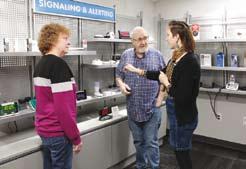

Circadian Rhythm is Important
Humans display a 24-hour circadian rhythm. This rhythm is endogenous meaning it is maintained even in the absence of environmental cues. Human beings placed in environments with no light, no time cues, no social cues, etc., will still display a 24-hour rhythm. However, external timing cues do modulate and adapt the rhythm to the environment. For example, sunlight, in humans, is a powerful cue to have the waking phase of our 24-hour cycle during the day. Other mammals, like rats and mice, have most of their waking phase at night. These rhythms were created through many years of evolutionary pressure. Light cues, which modulate our circadian rhythm, are extremely powerful. Circadian rhythm is endogenous so an internal pacemaker is necessary. The suprachiasmatic nucleus in the hypothalamus is a major part of the internal pacemaker of humans. This part of the brain is connected to the retina via the retinohypothalamic tract. This direct and powerful connection shows just how important light is for controlling circadian rhythm.
Stages of Sleep
Sleep is divided into two forms – non-REM and REM. Non-REM sleep is further subdivided into 4 stages, each with its own properties. During non-REM sleep neuronal activity is low, metabolic rate and brain temperature are at their lowest, heart rate decreases, blood pressure lowers, and muscle tone and reflexes are intact. Contrast this with REM (rapid eye movement) sleep where brain activity is similar to that of the awake brain. For this reason, it is sometimes referred to as paradoxical sleep. In REM sleep brain temperature and metabolic rate rise and there is complete loss of muscle tone with the exception of the diaphragm (so you can breathe), the eye muscles, and some muscles within the inner ear.
The
Adverse Effects of Blue Light
A recent study of about 1,500 Americans found that 90% of adults use an electronic device within 1 hour of bedtime at least a few times per week. Devices may be an important contributor to insomnia because of the short-wavelengthenriched light that is emitted from them. Exposure to light in the evening and the early part of the night, even at low intensity, has several sleep-disturbing effects. First, it suppresses melatonin, delaying the onset of sleep. It shifts the circadian clock to a later time making it harder to fall asleep at a regular hour. Finally, it increases alertness and arousal.
In one interesting study, 12 adults were randomly assigned reading from a light-emitting eBook for 4 hours before bed or reading from a print book for 4
SLEEP>>page 22
Are you in need of new assistive technology, such as an iPad, smart phone (iPhone or Samsung), and want to learn how you can purchase them at a reduced cost with the TEPP Voucher?
Visit our state-of-the-art, beautifully renovated Assistive Technology Center and meet at no charge with technology experts to determine your needs for the latest assistive devices. Appointment is preferred. Walk-ins Welcome!
Call or visit us today or get more information at hearwi.org
We are conveniently located on 102nd and National Ave.
Address: 10243 W. National Avenue, West Allis, WI 53227 Phone: 414-604-2200 • Email: info@hearwi.org
Audiology on Wheels? That’s Right! HEAR Wisconsin’s new Moblie Audiology Clinic is hitting the road in Wisconsin communities! Learn more at www.hearwi.org
14 MHL June 2024
Better Sleep AGE WELL
Stroke is the third leading cause of death among women and kills more women than men?

Women and Stroke What You Need to Know
Did you know stroke is the third leading cause of death among women and kills more women than men?
Surprised? If so, you’re not alone. Many women are not aware of their risk or the fact that symptoms can present differently in women.
“In recognition of American Stroke Month, we’re joining with other organizations across the country to raise awareness about symptoms and prevention,” said Austin Blilie, Chief Operating Officer at Tudor Oaks Home Care’s parent organization, ABHM.
“Knowing the facts about stroke can help women take steps to protect their health and, if needed, seek treatment.”
According to the American Stroke Association, some common stroke symptoms are:
Numbness or weakness in the face, arm or leg
Trouble speaking or understanding speech
Vision problems
Trouble walking or lack of coordination/balance
Severe headache without a known cause
Additional symptoms that women might experience include:
Disorientation, confusion or memory problems
Fatigue
Nausea or vomiting
The good news – you can significantly reduce the risk of stroke by making healthy choices and controlling any chronic health conditions you
Look at the statistics, In the United States:
might have, such as high blood pressure, high cholesterol or heart disease. Experts with the Centers for Disease Control and Prevention recommend that you:
Maintain a healthy diet. An unhealthy diet can increase your chances of having a stroke, because it may lead to an increase in your blood pressure and cholesterol levels. A low-fat, highfiber diet is best – with plenty of fruits, vegetables and whole grains.
Exercise regularly. Regular exercise can help lower your cholesterol and keep your blood pressure at healthy levels. For most people, at least 150 minutes of moderate-intensity aerobic activity, such as fast-walking or cycling is recommended.
Stop smoking. Smoking significantly increases your risk of having a stroke, because it narrows your arteries and makes your blood more likely to clot. So, if you don’t smoke, don’t start. If you do smoke, stop.
Limit alcohol. Heavy drinking can lead to weight gain, high blood pressure and trigger an irregular heartbeat, all of which can increase your risk of having a stroke. Experts believe heavy drinking multiplies the risk of stroke by more than three times.
Manage underlying conditions. If you have been diagnosed with a condition known to increase the risk of stroke, work with your doctor to make sure the condition is controlled.
For more information about stroke warning signs, prevention, recovery and resources, check out the American Stroke Association at stroke.org.
-More than �9�,000 each year suffer a new or recurrent stroke.
That means, on average, a stroke occurs every 40 seconds.
-Stroke kills more than 160,000 people a year.
-On average, someone dies of stroke about every four minutes.
-One in five women between the ages of �� and �� will have a stroke.
-About ��% of stroke deaths occur in females.
-Black women are more likely to die from stroke.
Black people have the highest risk of death from stroke compared with other racial and ethnicity groups.
-Stroke is the fourth leading cause of death for Hispanic women.


Tudor Oaks Senior Living Community, a trusted name in the Muskego area for over 40 years, is now offering Home Care Services to area residents! Tudor Oaks Home Care Services provide a variety of supportive options to assist seniors who wish to remain in their own home.
Tudor Oaks Senior Living Community now offers Home
Tudor Oaks Home Care S77 W12929 McShane Dr, Suite 100, Muskego, WI 53150 414-295-0745 TudorOaksHomeCare.com Tudor Oaks Home Care is owned and operated by American Baptist Homes of the Midwest, a not-for-profit provider of senior housing and healthcare since 1930. HOME CARE • Companion Care: Social Engagement • Personal Care: Nutrition, Meal Prep, Housekeeping • Advanced/Specialized Care: Memory Care support • Post-Operative Support: Assistance while you Rehab Call for your FREE In-Home Care Consultation today! Women’s Health AGE WELL June 2024 MHL 1�
Care Services!

THE WELL BEINGLifestyle

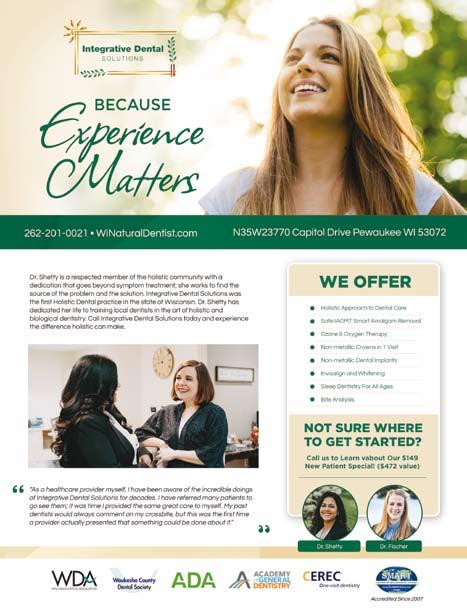

June 2024 MHL 1�


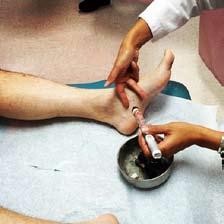





Dr. William Dunbar, PhD President of Midwest College “An Ancient Medicine for Modern Times” Degree in Oriental Medicine combined with Please call for additional information or to schedule a tour 800-593-2320 6232 Bankers Road Traditional Herbal Medicine Financial aid is available for those who qualify
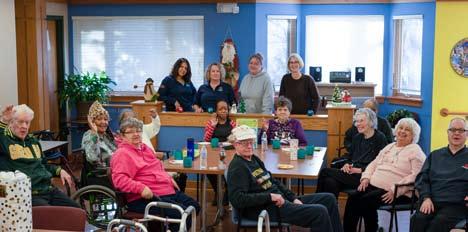
A Haven of Care for Older Adults
Our loved ones are precious to us. That’s why we arrange specialized care for them when we notice age-related conditions or dementia emerging. But that care should also be personalized and compassionate, plus enhance one’s well-being — exactly what Catholic Charities Adult Day Center (ADC) in Milwaukee provides.
Walking into the ADC, you’ll see it has a home-like atmosphere with experienced staff who focus on health and wellness. “After I took a tour, I knew this was the right place for my mom — every staff member is just so kind and devoted,” says a members’ daughter. “I really appreciate she’s cared for in such a loving way.” But beyond just experience, the staff is dedicated. Staff, according to director Annette Jankowski, have been working at the ADC for more than twelve years.
For ADC members, their daily routine involves companionship and activities: crafts, games, reading and listening to visiting musicians such as harpists and violinists. Certified nursing assistants ensure each member receives the personalized services they need. These may include bathing services, daily exercise or quiet time when they need it. The center is safe, comfortable and invigorating.
“Our center’s goal is for our seniors to remain living in their home as long as possible. A healthy daytime environment definitely helps,” says ADC director Annette Jankowski. “Having a loved one join the ADC early, when you begin thinking about extra care, is best. We often hear family members say, ‘I wish I would have called sooner.’”
The ADC is located at 1919 N. 60th St in Milwaukee, accessible to local families and those in surrounding communities like Waukesha, Brookfield, West Allis and Menomonee Falls. “I wish the world would know the Adult Day Center exists,” says volunteer Kathleen Cepelka. “This is a haven of safety, love and care.”
Know a loved one who needs daytime care? Email the director at ajankowski@ ccmke.org or call Catholic Charities ADC at 414.771.6063.
Adult Day Cares
As the number of elderly continues to increase dramatically, families are often faced with exploring how to secure needed care and assistance for a frail or func tionally impaired relative. These decisions are often made in times of high stress and families frequently do not have the time needed to explore all potential care options. One important source of family support that is often overlooked or not even known to be a feasible option is adult day care. This article will help the reader gain better understanding of this important service and who might benefit from enrollment in such a program.
Adult day care programs are an invaluable alternative to traditional long-term care placement, provide needed support to family caregivers and can often less en health care expenses for consumers and the health care system. Programs are staffed by a full range of interdisciplinary professionals who provide clients with health monitoring, leisure activities, socialization opportunities and assist ance with activities of daily living (ADLs). For caregivers, adult day programs offer respite, support group opportunities and access to supplementary networks and resources. In addition, these centers can reduce out of pocket health care expenses, lessen use of high cost centers such as emergency departments and delay institutionalization.

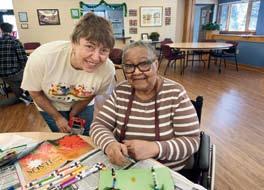
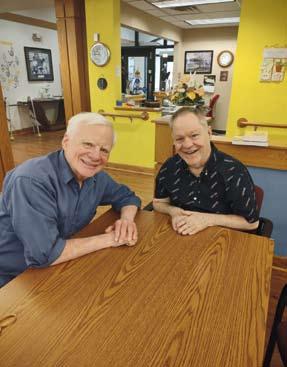


Adult Day Care LIVE WELL June 2024 MHL 19
Struggling to find your calling?

Listen to your body, not your mind
So many of us struggle to find our true calling and path, at any age. We spend hours, weeks, or even years ruminating, weighing pros and cons of steps we can take and changes we can make to get closer to that elusive sense of purpose. But all too often, instead of finding answers, we wind up anxious and stressed, riddled with analysis paralysis.
I know this from personal experience. In the first ten years after college, I tried out over ten different roles and professions—from baker to tenant organizer to senior associate of investor relations. None were a perfect fit, but I had no idea what would be better.
Now I know what the issue was—I was trying to figure it all out in my head. It’s where most of us go when we have a problem to solve, because our culture encourages us to remedy everything with logic, reason, and analysis.
But our heads are just one source of innate wisdom. Our bodies are another. They’re constantly reading our current situation and offering nearly instantaneous wisdom and guidance based on information they’ve incorporated from within and around us, past and present experiences, as well as instinct and intuition. The problem is, we usually aren’t paying attention to them, or we don’t know

how to interpret what they’re telling us, because our culture is disconnected from the wisdom of the human body. I explore this idea in my new novel This Animal Body.
Reconnecting with my own body’s wisdom has helped me find my unique purpose and realign my career with my strengths and passions – helping others heal from anxiety, find their calling, and thrive. I’ve done this as an author and coach for the last fourteen years and have never looked back.
Here’s how you can tap into your own body’s wisdom:
Learn the language of your body.
Because our culture trains us to ignore our bodies, the way they speak to us can feel like a foreign language. My favorite place to begin with any foreign language is to learn “yes” and “no.” You can do this with your body by pausing when you’re in situations that bring up stronger-than-usual feelings, either positive or negative, and noticing what sensations you feel in your body and where you feel them. Pay particular attention to your core, as in my experience, most people feel things more easily in the belly, chest, throat, or shoulders. The sensations you notice in positive situations when you’re doing something you like are how your body says “yes.” The ones from negative situations you can’t wait to get out of are how your body says “no.”
Observe your body over time.
Once you know your baselines, you can track your body’s responses throughout the day. When do you notice your “Yes Body” sensations? What’s your best sense of what your body is saying yes to? When do you notice your “No Body” sensations? What’s your best sense of what your body is saying no to? It’s helpful to take notes so you can track patterns over time. Asking these questions for at least a couple weeks can not only lead to profound insights, but it also helps us get in the habit of checking in with our bodies more.
Practice moving your attention from your brain to your body.
Speaking of habits, most of us spend 99+% of our time in our heads—planning, preparing, remembering, worrying, ruminating, or otherwise paying attention to our thoughts. Shifting attention from our brains to our bodies as a practice can not only help us tune into their wisdom, but also reduce anxiety and build the habit of being more present to what’s happening right now. You can do this with a body scan, yoga, or walking meditation. One of my favorite methods is sit outside and alternately focus on each of my senses—what I’m seeing, hearing, smelling, tasting, and feeling on and under my skin. The key is to notice when
CALLING>>page
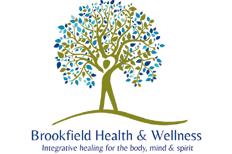

20 MHL June 2024 Mind & Body LIVE WELL
45

What is Mindful Eating? Your Complete Guide to Enjoying Your Food More
When’s the last time you took a moment to actually enjoy a meal? Not just cook something and turn on Netflix, but actually sit down, appreciate the food in front of you, and pay attention to the flavor.
In today’s fast-paced world, it’s easy to get caught up in the hustle and bustle of life and lose sight of the simple pleasures, like enjoying a delicious meal.
This is where mindful eating can help.
What is Mindful Eating?
Mindful eating entails fully engaging in the present moment and maintaining an awareness of your thoughts, emotions, and bodily sensations as you eat your food.
It’s about focusing on the experience of eating, savoring each bite, and paying
attention to your body’s hunger and fullness cues. This approach encourages a deeper connection with your food, the environment, and yourself.
Mindful Eating vs. Dieting
The primary distinction between mindful eating and dieting is that the former focuses on the quality of your eating experience, while the latter centers around restricting certain food groups or counting calories.
Mindful eating is not a custom weight loss plan; instead, it promotes a healthy and balanced relationship with food, free from guilt or deprivation.
Benefits of Mindful Eating
The benefits of mindful eating are numerous, including improved digestion, better management of emotional eating, and increased satisfaction from meals. Additionally, mindful eating has been linked to reduced binge eating, improved weight management, and overall enhanced mental and emotional well-being.
By practicing mindful eating, you’ll be able to enjoy your food more and establish a nurturing, sustainable approach to nourishment. [1][2]
Principles of Mindful Eating
Here are some of the guidelines for mindful eating and what you can expect to get out of them.
Cultivate the Right Space
Design a space that promotes relaxation and focus during mealtimes. This could involve setting the table with attractive dinnerware, lighting candles, or playing soft background music.
By establishing a peaceful ambiance, you’ll be more inclined to eat mindfully.
Listen to your Body
It all starts with listening to your body.
One of the core principles of mindful eating is tuning in to your body’s natural signals for hunger and satiety.
By paying close attention to these cues, you can avoid overeating and develop a healthier relationship with food.
Mindful Eating Exercises and Meditation
Before eating, take a moment to meditate or practice deep breathing to bring your attention to the present moment.
Practice Portion Control

Acceptance • Inclusion
Nutrition LIVE WELL June 2024 MHL 21
4 stores in greater Milwaukee • 24/7 online shopping • www.outpost.coop
• Joy Sharing good food with our family, neighbors and community since 1970.
>>page 22
MINDFUL
Overeating often results from consuming large portions outside the norm of a healthy meal plan.
To encourage mindful eating, serve yourself smaller portions and consider using smaller plates to trick your brain into thinking you’re eating more.
If you’re still hungry after finishing your initial portion, wait a few minutes before deciding if you need seconds, allowing your body to register fullness.
Eat Slowly and Savor
Mindful eating encourages taking your time to chew and enjoy every mouthful.
Eating slowly not only enhances the flavors and textures of your food but also allows your body to recognize when it’s full, preventing overeating.
Focus on the Senses
Engaging all your senses while eating helps deepen your appreciation for the meal.
Pay attention to the colors, smells, textures, and flavors of your food, and take the time to acknowledge the work and resources that went into creating your meal.
Appreciate Your Food
Cultivating gratitude for the food you eat fosters a sense of connection with the environment and the people involved in producing it.
This practice encourages you to make more conscious, sustainable food choices and promotes a greater sense of overall well-being.
10 Steps to Mindful Eating
Here’s a step-by-step guide on how to practice mindful eating:
Find a quiet and comfortable space: Choose a location with minimal distractions where you can focus on this mindful eating exercise.
Prepare a small portion of food: Select a small piece of food, such as a raisin, a piece of chocolate, or a slice of fruit.
Observe the food: Take a moment to look at the food, noticing its shape, color, and texture.
Engage your sense of smell: Bring the food close to your nose and inhale its aroma, paying attention to any sensations it evokes.
Take a small bite: Place the food in your mouth and take a small bite, but don’t chew yet. Notice the taste and texture on your tongue.
Chew slowly: Begin to chew the food slowly, savoring the flavors and textures as you break it down.
Pay attention to your body: As you chew, focus on any sensations or reactions your body experiences in response to the food.
Swallow mindfully: When you’re ready, swallow the food and pay attention to the sensation of it moving down your throat and into your stomach.
Reflect on the experience: After swallowing, take a moment to reflect on the entire eating process, considering the sensory experience and any emotions or thoughts that arose.
Repeat: Practice this mindfulness eating exercise with different types of food to develop a deeper appreciation for the various tastes, textures, and aromas each food offers.
Overcoming Common Challenges
To manage emotional eating, recognize your triggers and develop healthy cop-
ing strategies.
Resist external pressures to eat mindlessly by setting boundaries and communicating your intentions.
Stay committed to mindful eating by reminding yourself of its benefits, practicing self-compassion, and celebrating small victories in your journey towards a healthier relationship with food. For more information please visit www.totalhealthinc.com.
SLEEP<<page 14
hours before bed for 5 consecutive evenings. They found that those reading an LE-ebook displayed decreased subjective sleepiness, decreased EEG delta/theta activity, suppressed melatonin secretion, lengthened sleep latency (increased time to fall asleep), delayed and reduced REM sleep, and impaired morning alertness.
Why does blue light have this effect? Human eyes have rods, cones, and intrinsically photosensitive retinal ganglion cells. Rods and cones are mostly responsible for image-forming vision. Intrinsically photosensitive retinal ganglion cells are responsible for regulating circadian rhythm and other biologic functions. Retinal ganglion cells form the beginning of the retinohypothalamic tract which transmits light data from the retina to the hypothalamus to regulate circadian rhythms throughout the body. Retinal ganglion cells respond powerfully to short-wavelength light like the blue-colored light emitted from most devices and LED televisions. This blue light will cause a high rate of fire from the eyes to the hypothalamus, which will change hormonal and circadian rhythms.(4) Blue light also has the ability to stimulate other areas of the brain which are responsible for producing norepinephrine, a neurotransmitter that has potent arousal properties. With the knowledge that the blue light emitted from almost all devices and LED TVs is disruptive to the foundational pathways for sleep, it’s important to take steps to remedy this if you’re having trouble sleeping. First and foremost, do not use your device in bed. At all. In fact, you should avoid using it at least an hour before you plan to go to bed. Do not watch TV in bed either. If your symptoms are severe, avoid TV for at least an hour before you plan to retire. If you have to use a device for some reason, avoid long exposure. You should also consider wearing red-colored lenses for about an hour before bed. The red-color of the lens blocks the blue light from reaching the retina. Blue-light blockers that are clear also exist. You could consider purchasing a pair of these and using them in the evening and while you’re using your device. I’ve recommended a pair from this website: www.blepeyewear.com. As devices age, they tend to emit more blue light. If possible, consider getting a newer device. Finally, many devices come with a night-shift mode. This mode shifts the hue of the screen to a warmer, redder tone. This has been studied to see if it offset the negative effects of the light from a device. Unfortunately, it did not. Melatonin levels were still reduced when using night shift mode.(6)
In the end, if you suffer from insomnia, reducing your device exposure is likely to have a measurable effect on your sleep. Our devices have become extensions of our lives so it may be difficult to completely eliminate exposure, however, your brain (and your boss) will thank you for the better sleep. For more information please visit www.mmtmke.com
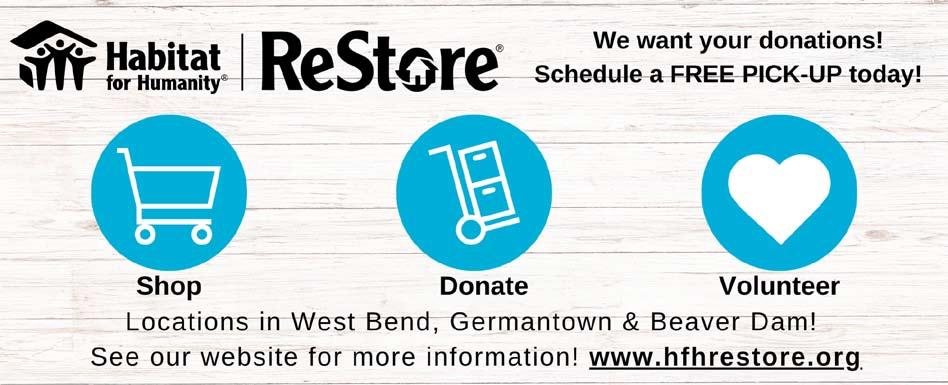
22 MHL June 2024
MINDFUL >>page 22
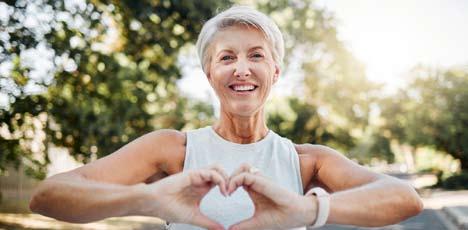
Medicare For You: What You Need to Know
By Chiquita Brooks-LaSure
Your health is important and needs to be protected. If you are 65 or older, or have certain disabilities, or End-Stage Renal Disease, you can get health care coverage through the Medicare program. You’ll get access to health care services you need to achieve and maintain good health.
It’s important to review your Medicare coverage options and find an affordable option that meets your health care needs.
Medicare coverage options
There are two types of Medicare coverage:
Traditional or Original Medicare. Medicare Advantage.
Original Medicare helps cover inpatient care in hospitals, skilled nursing facility care, hospice care, and home health care. It also covers:
Services from doctors and other health care providers.
Outpatient care.
Durable medical equipment (like wheelchairs, walkers, hospital beds, and other equipment).
Preventive services (like screenings, certain vaccines, and annual wellness visits).
Original Medicare is often referred to as Part A and Part B. You can go to any doctor or hospital, anywhere in the United States, that accepts Medicare. If you have Original Medicare, you can also buy a Medicare Supplement Insurance (Medigap) policy from a private insurance company. Original Medicare pays for much, but not all, of the cost for covered health care services and supplies. A Medigap policy can help pay some of the remaining health care costs, such as copayments, coinsurance, and deductibles.
Medicare Advantage bundles your Original Medicare – and usually Medicare prescription drug coverage – into one health insurance plan. If you select
Medicare Advantage coverage, you join a plan offered by Medicare-approved private companies.
Each plan can have different rules for how you get services – like referrals to see a specialist. All plans must cover emergency and urgent care, as well as all medically necessary services covered by Original Medicare.
In many cases, you can only use doctors and other providers who are in your plan’s network and service area.
Costs for monthly premiums and services vary depending on which plan you join. Some plans may offer some extra benefits that Original Medicare doesn’t cover — like vision, hearing, and dental services.
Whether you choose Original Medicare or Medicare Advantage, be sure you have prescription drug coverage. You can join a Medicare Prescription Drug Plan (called a PDP) in addition to Original Medicare. You can also get it by joining a Medicare Advantage plan with Medicare prescription drug coverage.
How does Medicare Supplement Insurance (Medigap) work?
Original Medicare doesn’t pay for all of the cost for covered health care services and supplies. Medicare Supplement Insurance (Medigap) policies sold by private insurance companies can help pay some of the remaining health care costs for covered services and supplies, like copayments, coinsurance, and deductibles. Some Medigap policies also offer coverage for services that Original Medicare doesn’t cover, like medical care when you travel outside the U.S.
Generally, Medigap doesn’t cover long-term care (like care in a nursing home), vision or dental services, hearing aids, eyeglasses, or private-duty nursing.
For more information, visit Medicare.gov/health-drug-plans/medigap.





June 2024 MHL 2� Health Coverage LIVE WELL
NOW ENROLLING Childcare
Passionate, caring teachers, and...
- Early Head Start Services
- 4-Star Youngstar Rating
- 6 Weeks-5 Years
- Before- & After-School Care, 5-12 Years
- Healthy, Tasty Meals & Snacks & More!



FINANCIAL ASSISTANCE AVAILABLE
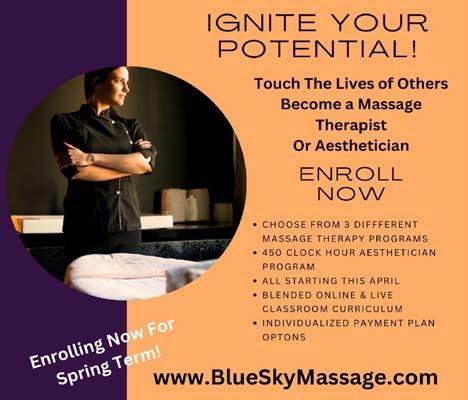




Do Children Need to Crawl?
By Angela English, DC
From the day your child is born, you look forward to witnessing life develop in front of your eyes. Living in a competitive world and seeing any delay in your child’s development can be very frustrating and worrisome. Why do some kids reach milestones such as rolling over, crawling, walking, talking, etc, before others? And why do some miss the milestone of crawling all together?
One thing that we know for sure is that we all mature at our own rates. Some infants get teeth before others, some walk before others, some talk before others and the list goes on and on. Crawling has somehow fallen under the radar of a lot of parents as being important. In fact some parents even think their children have a step ahead of other kids if they don’t crawl. “My child is so smart that he skipped crawling and went right into walking” has been heard around the parenting circles many times, but this is actually far from being true.
Crawling is a very important action for a child to do to help develop his nervous system and spinal curvatures. It provides communication from the brain to the rest of the body across midline, ie: the right brain communicates and coordinates movement with the left side of the body and registers through touch and body awareness on what is going with the body as it is moving. It also activates the vestibular and proprioceptive systems which help with balance and sensory development of the child. Research has shown that crawling has also helps academic performance later in life opposed to those children that did not crawl.
When a child does not crawl, it can be because of a few reasons. More and more it tends to be because a child is often in a Johnny Jump Up or walkers on a daily basis and therefore children are more used to being upright. Children who spend more time in this upright
position tend to be “toe walkers” when they start walking and have a straighter spine or “military spine”, which can lead to back problems later in life. Parents are told by there pediatricians not to let there babies sleep on there tummies at nigh due to SIDS and babies suffocating themselves in that position and then don’t let there children have much tummy time during the day either. Children are also starting day care at very young ages where it is hard to have one on one time with any child to encourage tummy time and crawling. Tummy time can easily be achieved by letting the child lay on the parents lap or on a blanket on the floor for short periods of time while being supervised. When this is not encouraged in infancy, the child can start to be more scared or irritated by being on their tummies than what is usual.
There are actually neurological disorders including Cerebral Palsy, autism and other spectrum disorders, learning disorders and more which make cross crawl type movements very difficult for the child and parents to do on their own. In these cases, physical therapy, occupational therapists and chiropractic professionals that are trained in pediatrics and neurosensory disorders can make a big difference in your child’s future development.
Parents on there own should be encouraging the crawling motion and can walk there child through those motions. This can easily be done when a child gets there diaper changed by moving the child’s opposite arm and leg up and down in a crawling motion and can done a few times on each side before switching to the opposite side. Doing these motions to a tempo such as counting or singing and moving to the beat can really encourage these kids to create these neurological pathways. These should be done with any child of any age that did not crawl. The more a child crawls the faster these pathways communicate and can make almost every action easier as the child continues to develop.
Children’s Health LIVE WELL 24 MHL June 2024
E. Morgan Ave. Milwaukee, WI 53207 BUCYRUS CAMPUS 414-210-2450 2450 W. North Ave. Milwaukee, WI 53205
STEIN CAMPUS 414-977-5000 2801










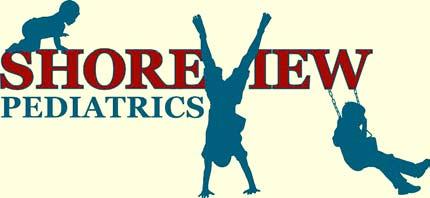
MODERN HEALTH AND LIVING


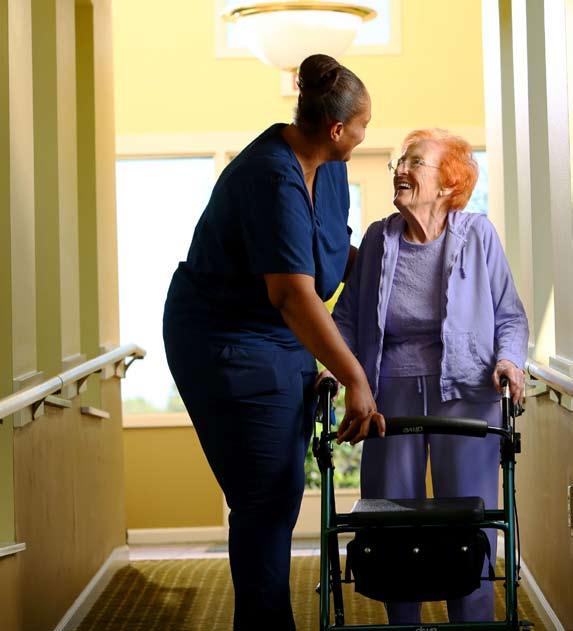
Mission
Mission

WHO WE ARE
Creek is the best local assisted living and memory care for you, your family, friends, and loved ones. We work hard to keep our residents and this community great. WHAT WE DO
work directly with our residents and their families to keep everyone involved with their interests and pursuits. Your community remains at the center of life, alongside top-of-the-line care for a comfortable and fulfilling lifestyle. VISIT SENIORLIFESTYLE.COM OR CALL 262-896-8888 TO LEARN MORE. MISSION CREEK
We
www.missioncreekofeden.com WHO WE ARE
Creek is the best local assisted living and memory care for you, your family, friends, and loved ones. We work hard to keep our residents and this community great.
WE DO We work directly with our residents and their families to keep everyone involved with their interest and pursuits. Your community remains at the center of life, alongside top-of-the-line care for a comfortable and fulfilling lifestyle. Mission Creek 3217 Fiddlers Creek Dr, Waukesha, WI 53188 (262) 832-1020
WHAT
A positive guide to the next phase of life Happiness. Wellness. Peac of Mind. 26 MHL June 2024
SENIOR LIFESTYLES
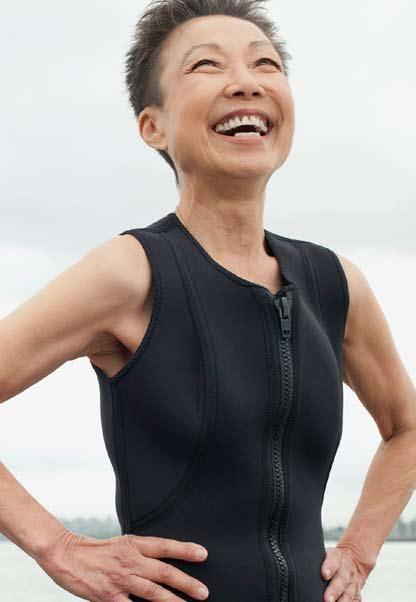
Improving Your Emotional Wellness
What is emotional wellness? Emotional wellness is the ability to have an awareness and understanding of one’s feelings and manage one’s emotions effectively through challenges and change. It is crucial for seniors as they navigate the possible challenges that come with aging. Loss of loved ones, health concerns, and changes in living situations make addressing emotional well-being vital for a fulfilling life.
Why Does Emotional Wellness Matter for Seniors?
Emotional wellness directly affects physical health, cognitive function, and social interactions. Positive emotional health fosters resilience, aids cognitive function, and enhances social relationships, contributing to overall happiness and well-being.
How to Improve Emotional Wellness as Seniors
To improve emotional wellness for seniors, encourage regular physical movement, social engagement, mindfulness practices, and pursuing enjoyable hobbies. Seeking professional support, like counseling, can address specific challenges.
How Senior Living Communities Support Emotional Wellness
Senior living communities can play a significant role by providing a supportive environment that encourages social connections, offers wellness programs, and facilitates access to professional assistance, contributing to a holistic approach to emotional wellbeing. Prioritizing emotional health enables seniors to navigate aging with resilience and maintain a positive outlook on life.
St. Camillus Life Plan Community and our Revitalize Wellness Program are dedicated to providing seniors with opportunities in all dimensions of wellness. Physical, emotional, social, Intellectual, spiritual and community wellness are at the heart of services and enrichment opportunities we offer our residents. With our expansive calendar of events and offerings, our residents can explore new ways to engage and foster emotional wellness and enhance quality of life. To learn more about St Camillus and Revitalize Wellness call 414-259-6310 or visit www.stcam.com.

June 2024 MHL 2� Community Living LIVE WELL


Discover the Advantages of Tudor Oaks Senior Living Community!
Located on a large, beautifully landscaped campus, Tudor Oaks is a unique retirement community for today’s seniors seeking a comfortable retirement lifestyle in a


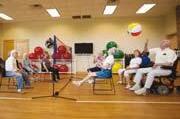



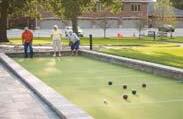

Tudor Oaks offers...
■ Independent Living
Luxury apartments with attached heated garages
Style-smart, charming private apartments
■ Skilled Nursing
Quality Care 24/7
■ Rehab Stays
Private room/bath, TV, Phone, WiFi
■ Memory Care
Personal suite with private bathroom
■ Respite Stays
Private Room, up to 28-day stay


Tips for Touring a Senior Living Community
When you or a loved decide to downsize and move into an assisted living community or independent living apartment , it’s not just about safety or healthcare; it’s also about finding your new home. A place where you feel happy and comfortable!The transition into a retirement community is a major life decision. That’s why it is best to visit several different senior living communities. Look for quality, safety, and most importantly – a great reputation. Read the community’s online reviews.
Though it’s tempting to choose a community that’s closest to your current home or possibly the most affordable option, don’t settle if you think there may be better options that can meet your current and future healthcare needs.
After you’ve decided what communities you’ll be visiting, here are a few tips to keep in mind during your tour:
1) Ask questions. Don’t be afraid to ask a lot of questions, even if they seem unnecessary in the moment. Tour guides should be willing and happy to answer all questions that may arise. Ask what kind of meal plans are available and if the kitchen takes special requests for dietary requirements. Inquire when visitors are allowed and if overnight accommodations can be provided for them. Learn about the community’s social activities and whether transportation is provided to off-campus appointments and events.
2) Find reviews or feedback from residents. During your tour, make sure to talk to residents and ask how they feel about living in the community. Or, look for reviews of the community on the internet to see what others are saying.
3) Enjoy a meal. The food should taste great! Quality of food is impor-
tant to your overall health and happiness; so if possible, join the residents for a meal. Find out if you can order items other than what is being offered, and if the kitchen takes note of special dietary restrictions or food allergies.
4) Observe the state of the building and grounds. Note how well-maintained the parking lots, walkways and landscaping are as you’re walking into the building. There should also be some outdoor areas for residents to gather and enjoy the fresh air. Once inside, pay attention to how clean the hallways and communal areas are. The senior community should smell fresh and be as dust-free as possible. Again, the best way to get an accurate “feel” for the community is to visit on an offday; not during an open house.
5) Meet the staff and residents. While on your tour, talk with staff members as well as the residents. Take note of their attitudes; are they friendly, courteous, and seem happy to be there? Do the residents look like they are engaged and energized? The happiness of current residents can speak volumes about the community.
6) Go with your gut. If it seems difficult to make a final decision, remember to trust your instincts. Did it seem like you would be happier at one place over the other? Did you like the décor better, or were the staff slightly more welcoming at a certain community? In the end, it’s important to go with where you feel you’ll be most comfortable in the years to come.
At Tudor Oaks, we ensure residents are happy and enjoying an active, vibrant lifestyle. You’ll find a variety of social and educational events to keep you engaged in the world around you, as well as wellness programs to promote physical wellbeing. In fact, you may find yourself wondering why you didn’t move much earlier!
2� MHL June 2024
Tudor Oaks is owned and operated by American Baptist Homes of the Midwest, a not-for-profit provider of senior housing and healthcare since 1930. Tudor Oaks Senior Living Community S77 W12929 McShane Drive, Muskego, WI 53150 414-529-0100 • TudorOaks.net Call 414-529-0100 for a tour or visit www.TudorOaks.net for a fly-thru video tour of our community.
■ Assisted Living
home-like atmosphere, filled with new opportunities and experiences.
Community Living LIVE WELL

Preparing to Move Stress-Free Downsizing
Start Early - Give yourself plenty of time to prepare for your move. 6 months to 1 year before your move is the best time to start the process. If you don’t have that much time, don’t be discouraged, it’s never too late to begin.
Create a Timeline - A timeline will help you plan and prepare for your move regardless of when and how far away you are moving. Start with your move date and work backward to set a schedule for getting everything done in time. Also, create a detailed checklist of things to complete including canceling and transferring utilities & services and making all the necessary address changes.
Downsizing - If you are moving into a smaller space, it is essential to downsize your belongings. A floor plan can help determine which furniture pieces will fit in your new home. Additionally, sorting through your kitchen, bathroom, and closets can greatly impact your move’s success. As you are editing your things, consider your new space as well as your current & future lifestyle. Focus on what you use, need, love, AND most importantly, what will fit in your new home. Considering the storage and cabinet space in your new kitchen and bathrooms can be especially helpful as you sort through your things. You can even measure how many feet of hanging clothing your new closets will accommodate.
Packing - To ensure your items are safely moved to your new home, it’s important to use appropriate size boxes for your belongings. Books, glassware, canned goods, and other small, heavy items should be packed into a 1.5 cubic foot box. Small appliances and larger items can be packed into a medium 3.0 box. Large 5.0 cubic foot boxes are great for bedding, linens, pillows, and towels. Avoid using trash bags, open-top boxes, and newspapers for packing. As you pack, consider where items will go in your new home. Boxes should be labeled with the room in which they will be unpacked and a few details of the contents. You will
want to be able to quickly identify which boxes contain your coffee pot or other essential items to be able to open right away and save the decor for unpacking later.
Moving Day - A well-thought-out plan and thorough preparation can contribute to a smooth move day. Identify a box or suitcase of essentials for your first night in your new home. This should include items you would typically pack as if you were staying in a hotel. You’ll also want quick access to a set of clean sheets for your bed. If you’ve hired a reputable moving company to do the heavy lifting, still be available for questions as they arise. Share your floor plan with the movers or plan to direct them on furniture placement in your new space. Remember to take breaks throughout the day and take care of your needs.
Unpacking & Set up - The kitchen is often one of the most used rooms of a home and should therefore be one of the first rooms to unpack and set up. You will inevitably find items you don’t need or want as you unpack boxes. Be prepared to donate, recycle, or discard these things, as appropriate. Give yourself plenty of time to unpack and settle into your new home.
Tip - Consider hiring professionals to help with packing, moving, and unpacking. Research suggestions from friends and family to help you find the best fit for your needs. The community where you are moving might also have referral options for you to consider.
Author: Kari Stremmel is a Team Lead for Smart Moves. She lives in Southeast Wisconsin, is married, and has 2 young adult children. In the past 25 years, Kari and her family have moved 7 times, 5 of which were cross-country moves. Visit www.smartmoveswi.com or call 414-526-5242.






June 2024 MHL 29 CREATING YOUR NEXT CHAPTER be gins wi t h us. Complete Personalized Downsizing & Moving Solutions A SERVICE FOR SENIORS IN TRANSITION PACKING | UNPACKING | ROOM LAYOUT www smartmovesforseniors.com | info@smartmovesforseniors.com Smar t Moves offers compassionate moving, organizing, and downsizing ser vices. ESTIMATES AND CONSULTATIONS ON OUR SERVICES ARE FREE 414-526-5242
Downsizing LIVE WELL

How To Tell If Your Loved One is Hiding Symptoms of Alzheimers
Does something feel off about an older loved one? Have you felt uneasy following a visit with mom or dad? Older loved ones may chalk up lapses in memory, or other bouts of forgetfulness, as merely “age-appropriate.” Although your older loved ones may be used to handling themselves and wish to reassure their family, YOU are the one who knows them the best. Worrying about the cognitive health of an older loved one is not only normal, but should be encouraged. Take a look at the helpful tips below if you think your loved one may be trying to hide or dismiss symptoms of Alzheimer’s disease. What is it?
Alzheimer’s disease is an ailment that affects older adults which can lead to general cognitive decline known as dementia.1 While dementia is a catch-all term for classifying a decline in mental abilities that impact a person’s daily life, Alzheimer’s is a specific degenerative brain disease that has its own diagnosis. While common in older adults, it is important to understand that Alzheimer’s disease is NOT a normal part of aging; it is a progressive disease – one that is gener-
ally split into three stages (early, middle, late) and which does not have a cure.
“This seems serious. Are you trying to scare me??”
As with all things regarding aging and senior care, there is always hope and comfort even when things seem serious. If found and diagnosed early, the impacts of the disease can be greatly diminished. In fact, varying medications and treatments continue to be tested each year.1 Such methods can reduce the progression of the disease and improve the quality of life for older loved ones. However, attached to this ray of hope is the great hallmark of the disease, and one that can be overlooked: early identification and diagnosis is key. This is why it is imperative to figure out if your loved one is displaying, or trying to hide, symptoms of Alzheimer’s.
So What are the Key Symptoms I Should Look For?
When keeping an eye out for early stage symptoms, keep in mind the “Two M’s”: Memory and Mood. Is your loved one forgetting names or events? Are they forgetting recent conversations or misplacing familiar items? Do they repeat the same questions or phrases? While major signs, some less noticeable ones include having trouble thinking of the right word(s) to say or taking a while to make decisions.2 In the same way, mood swings that include anxiety, agitation, depression, frustration, or that involve periods of confusion point towards Alzheimer’s.2 Again, YOU know your older loved one the best. Poor judgment, changes in mood, and forgetfulness should not be dismissed as the consequences of aging; rather, such signs should be red flags that peak your awareness and care.
“Wait, these are the early symptoms? Are there any more I should watch out for?”
Staying true to the Two M’s, seniors that transition into the middle stage may experience the above symptoms, but to a worse degree. Confusion and disorientation, repetitive or impulsive behavior, and frequent mood swings are major symptoms. Outside of memory and mood, problems with speech, sleep, paranoia, and even hallucinations can accompany this stage of the progressive disease as well.
What are the Major Signs That My Loved One is Hiding Symptoms?
Forgetting. Perhaps the greatest and most telling symptom of early Alzheimer’s is forgetfulness. Due to the nature of such a symptom, it also is one of the easiest to hide from family. Is an older loved one forgetting the current day or struggling to keep up with a conversation? Did they forget a birthday? What about more serious actions, like forgetting to pay a bill or leaving the stove on after supper? In order to compensate for forgetting, individuals with early Alzheimer’s may
ALZHEIMERS >>page 37
Ask about our Spring Specials! Select Apartments still available- Call to schedule your tour today!
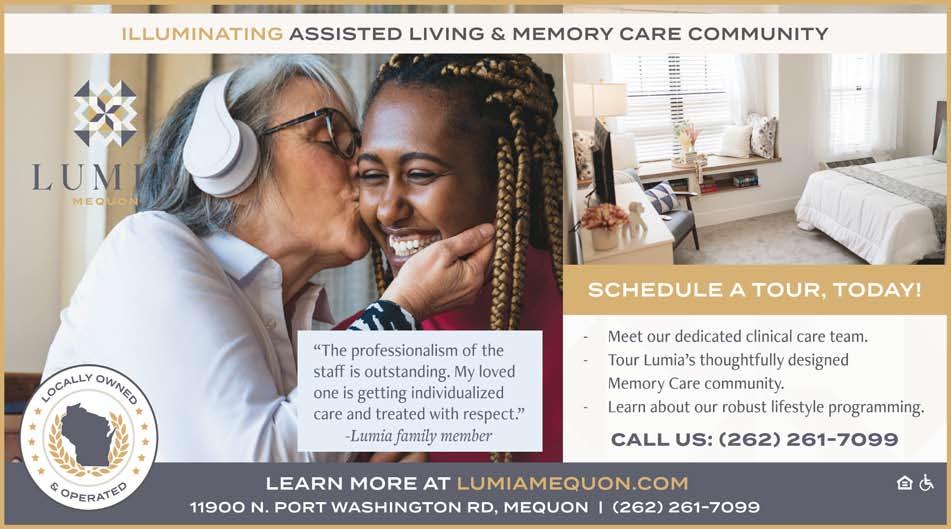

�0 MHL June 2024 Memory AGE WELL

8 Ways to Support Your Seniors Through Major Life Transitions
Change is never easy, especially for seniors. Major life transitions like retirement, moving to assisted living, or losing a loved one can be overwhelming. You play an important role in supporting seniors through these challenges. Follow these tips for helping them navigate through life’s later roadblocks:
Empathy is Everything
When your seniors are experiencing tough circumstances, listen intently. Be present and ask open-ended questions. Allow them to voice their feelings and concerns, and show compassion in return. Listening with empathy creates a safe, supportive space for them to share their thoughts.
Connection is Crucial
to big changes.
Care for Yourself, Too
Helping seniors navigate these challenges can be physically and mentally taxing. It’s important to rest, eat well, and enjoy your favorite activities, too. Remember that it’s okay to take a break. When you take care of yourself, you can provide others the best care and support.
Self-Care for Seniors
Mark Your Calendar!
Major life events can feel isolating, especially when seniors are experiencing a loss or changing their living situation. You can help by encouraging them to stay connected with their loved ones and being a supportive resource yourself. Maintaining social connections and participating in community events can help them keep friendships and make new ones. Even encouraging them to make phone calls or video calls with friends and family helps maintain their social circle.
Encourage your seniors to prioritize their physical and mental health when major life changes arise. Exercising, meditating, and making time for their hobbies support a self-care routine. Booking regular appointments for massages or therapy counts, too. Remind your seniors that taking care of themselves benefits their well-being and helps them to better cope with the changes they’re experiencing.
Help from a Professional
“SPRING INTO WELLNESS” HEALTH FAIR
Come to Milwaukee Catholic Home for our annual “Spring into Wellness” Health Fair on Thursday, March 16th from 10 am - 3 pm at 2462 N. Prospect Avenue. The event includes free health screenings such as blood pressure checks, diabetes testing, cholesterol pre-screenings, and eye exams, as well as massages, reiki, door and raffle prizes, goodie bags, and more! Contact Linda Cardinale at 414.220.3216 or lcardinale@milwaukeecatholichome.org to learn more.
Provide Practical Support
Offering emotional support is essential, but practical support is just as important. Maybe your seniors need assistance packing and moving, finding a new doctor or healthcare provider, or keeping track of finances. Ask and identify where their needs lie. You can be an incredible resource for them when they need practical help.
Patience & Understanding
Sometimes, these events are hard to handle alone. If you believe your seniors could benefit from professional help, consider asking a therapist or healthcare provider for assistance. They can guide and support them through these times in addition to recommending resources.
Celebrate Small Victories

Seniors might need more time to adjust to major life transitions than others. Remaining patient and understanding allows them the freedom to move at their own pace. Avoid pressuring them to make decisions or to quickly adapt to new environments or situations. Gentle encouragement and support help them comfortably adjust
It’s easy to feel consumed by these major life changes. Celebrating small victories along the way keeps an optimistic outlook on the future. Motivate your seniors to practice gratitude by reflecting on what they’re most thankful for. Praise them for small wins and for progressing toward their goals. Approach their new transition with a positive mindset, and they’ll feel empowered by it.
The Power of Support
Having the right support can be all it takes to achieve success. You play a critical role in helping your seniors navigate tough times with grace and confidence. By lending a listening ear, offering practical and emotional support, and being empathetic and understanding, you can guide your seniors on their next journey.










See what’s new at St. Anne’s. St. Anne’s Salvatorian Campus 3800 N. 92nd Street, Milwaukee 53222 www.stannessc.org Take a tour of our innovative enhanced assisted living facilities or visit our renovated chapel. Call 414-463-7570. Caring for people since 1876. 140 years old and still turning heads.
SENIOR<<page 30 June 2024 MHL �1 Retirement LIVE WELL

More than �0 percent of Americans suffer from back problems at some point in their lives, according to the National Institutes of Health.
Exercises To Help You Stand Taller
By Kelly Gonzalez
Suffering from a permanent slouch? You’re not alone. Poor posture has become more prevalent since many people find themselves seated in front of a computer all day. And it’s not doing us any favors. More than 80 percent of Americans suffer from back problems at some point in their lives, according to the National Institutes of Health. The good news is that there are things you can do to improve your posture and help prevent chronic low back pain — most of them involving movement. “The best posture is a variety of postures,” says Justin Ternes, a physical therapist in
San Diego, California. “The worst posture is your default posture or the posture you’re in the longest.
If you’re seated for an extended period of time, getting up and moving every 30, 60 or at least every 90 minutes is vital. During that time, you can incorporate one (or all) of the six exercises below to help you stand taller and feel better.
Mountain Pose (Tadasana)
The best way to improve your posture? Practicing good posture. “The standing postures in yoga such as Tadasana teach people how to stand and build a strong foundation,” says yoga teacher Josh Vincent. This pose brings awareness to the weight distribution in your feet, awakens your lower legs and strengthens the arches of the feet — all of which help train your body to stand taller.
Start with your feet hip-width apart. Shift the weight into your heels. Lift and spread your toes.
Lift the inner arches of your feet as you wake up the muscles of your lower legs. Set the toes down as you keep the activation through the arches of your feet. Evenly distribute your weight and press into all four corners of your feet.
Firm your quadriceps to feel a slight lift in the knee caps.
Lengthen your tailbone toward the floor as you draw your navel in toward your spine.
Lift your breastbone and widen across your collarbones as the shoulders release back and down.
Let your arms hang by your sides with palms forward.
Draw your chin slightly in toward your chest to feel a lengthening through your cervical spine.
Reach the crown of your head up toward the sky.
Spinal Wave
“To increase pain-free range of motion, you can move further into poor posture (shoulders rounded forward and slouching) and come back upright by using the erector spinal muscles to pull you back upright,” says Ternes. After the push and pull of spinal flexion and extension, allow your body to fall into an upright position somewhere in between.
From either seated or standing, roll into spinal flexion, rounding your back forward.
Actively rise up into spinal extension, arching slightly backward.
EXERCISE>>page 46


�2 MHL June 2024 Wellness AGE WELL
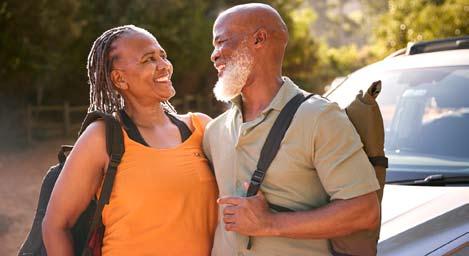
Heat and Hearing Aids Don’t Mix
As temperatures rise during the summer months, individuals who wear hearing aids may encounter some unique challenges related to managing their devices in hot and humid conditions. Heat and humidity can affect the performance of hearing aids, potentially leading to discomfort or malfunction. Let’s explore how to navigate these challenges and ensure that your hearing aids continue to perform reliably in warm weather.
How Heat Affects Hearing Aids
Heat can impact hearing aids in several ways:
Battery Drain: High temperatures can cause hearing aid batteries to deplete more quickly than usual, reducing battery life.
Moisture Buildup: Humid conditions can lead to moisture buildup inside the hearing aid, potentially affecting performance and causing discomfort.
Component Damage: Prolonged exposure to heat may damage sensitive electronic components within the hearing aid, leading to malfunctions or reduced lifespan.
Tips for Managing Hearing Aids in Warm Weather
Here are some ways you can protect your hearing aids during hot weather:
Store Hearing Aids Properly: When not in use, store your hearing aids in a cool, dry place away from direct sunlight and humidity. Consider using a hearing aid dehumidifier or storage case with moisture-absorbing properties.
Avoid Extreme Temperatures: Keep your hearing aids away from extreme temperatures. Don’t leave them in a hot car or expose them to direct sunlight for extended periods.
Use Protective Accessories: Consider using hearing aid sweatbands or covers designed to protect devices from moisture and debris during outdoor activities.
Keep Your Ears Dry: Use a towel or cloth to gently dry your ears and remove any excess moisture before inserting your hearing aids.
Use Air-Conditioned Spaces: Whenever possible, seek out air-conditioned environments to reduce exposure to heat and humidity.
Monitor Battery Life: Keep an eye on your hearing aid batteries and replace them if they show signs of reduced performance due to heat.
Cleaning and Maintenance Tips
Regular cleaning and maintenance are also essential for prolonging the lifespan and performance of your hearing aids, especially in warm weather conditions:
Clean Daily: Wipe down your hearing aids daily with a dry cloth to remove sweat, oils, and debris.
Inspect for Moisture: Check the battery compartment and vents for signs of moisture buildup and use a hearing aid drying kit if necessary.
Change Wax Guards: Replace wax guards and filters regularly to prevent wax and debris from accumulating inside the device.
Additional Considerations for Outdoor Activities
When you’re heading outside with your hearing aids, it’s important to take extra precautions to protect your devices and ensure optimal performance:
Use a Hat or Headband: Wearing a wide-brimmed hat or a moisture-wicking headband can provide shade and help absorb sweat, reducing direct exposure to sunlight and moisture that can impact your hearing aids.
Use Waterproof Covers: If you plan to swim or participate in water-related activities, consider using waterproof covers or sleeves specifically designed for hearing aids. These covers provide an extra layer of protection against water damage and debris.
Carry Spare Parts: Always carry spare hearing aid batteries, cleaning tools, and protective accessories with you when spending a day outdoors. This allows you to quickly address any issues that come up, such as low battery power or debris buildup.
By incorporating these suggestions into your outdoor routine, you can en-
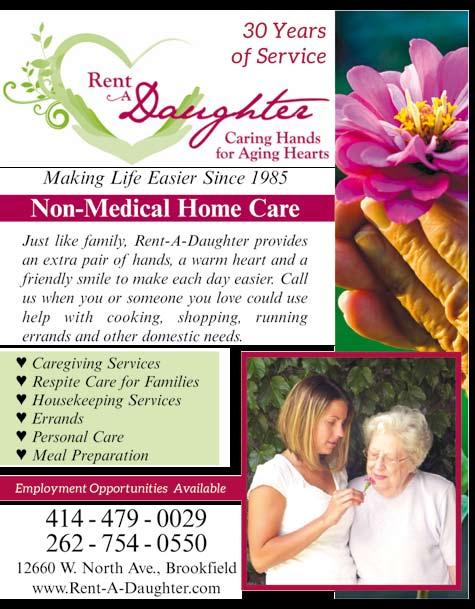

June 2024 MHL ��
Hearing LIVE WELL HEAR>>page 47

Start Making Memories and Planting Our Roots
Asenior’s residence is a place of security. Moving out of the home you spent many years creating memories can be difficult emotionally. But you might want to look at moving into a senior community as a positive move. When we are young we can’t wait to explore new things and get away from the same old –same old. We want to start making memories and planting our roots. Why not think the same way. Look at a Senior Community as an adventure, something that might bring back the great memories from when you were young and getting back into the world out there. A senior community can be a great change. You can meet new people, get rid of all the hassles of house work, and have a easier retirement life.
There are several types of residential senior communities to choose from, so you need to explore and find what is right for you.How does one determine which senior community would fit best with their needs?
Temporary vs long term care: A senior’s needs are more practical by planning to move into a situation that is most likely to remain for many years to come.
Independence: Can you and would you want to live on your own? Or would it be best to find a more service oriented residential facility?
Needs for personal care: How much and what kinds of personal or “custodial care” are needed or desired? There are online needs assessment questionnaires to help determine this and then match the care needs with the right type of housing.
Needs for medical care: If the senior has a chronic illness that necessitates special medical care, or ongoing services of medical professionals, independent living and even assisted living may not be suitable.
Costs: Learn about the financial aspects of senior housing to determine what options are affordable for you.
Walk through senior communities that seem suitable. Make a checklist of what each has to offer. Then make your own checklist of your needs and wants. Look over each list with a friend or family member they might have some helpful input to give.
Seek guidance from professionals who are experts in senior communities. They can help with the process of identifying your goals and values, assessing your needs, determining what your financial situation will allow and suggesting what facility might be right for you.
When you set out to evaluate a specific independent living, assisted living, or memory care residence, how do you know you are seeing the everyday ‘face’ of the facility? Below are some basic suggestions on how to proceed.
Go Unannounced – Visit a residence on the weekend and observe what is happening. Caregivers should be engaged with the residents. Is there life in the community? What do you see, smell, and hear? Try to avoid scheduling a tour of the facility where they put on a show instead of letting you know what’s really going on.
Talk To The Residents – Learn what residents are thinking about their community. Naturally you will hear both glowing reports as well as minor complaints, but are there any themes that repeatedly run through their comments? Are they uncomfortable, not sleeping well, bored, or unable to find anyone to listen? Dig a little deeper into complaints you hear repeatedly.
Talk To The Staff – The caregivers deliver what the senior needs, so ask to be introduced and visit directly with the people ‘in the trenches.’ Ask about the rate of caregiver turnover and make certain staff is trained to handle special care needs.
Review Records – Senior facilities are inspected on a regular basis. You have the right to see any reports from those inspections.
When you help to make a decision affecting the most precious people in your life, remember to ask the best question of all: Would you enjoy living there?


Carefree Community Living AGE WELL �4 MHL June 2024
FLOWER GARDENing Pro Tips

These tips on how to start a flower garden are inspired by Plant a Flower Day. Flower gardening can help you cultivate beauty and joy in your life, home, and neighborhood. Every time you walk outside during their blooming seasons, you’ll be able to stop and smell the roses—or the lilies, zinnias, hyacinth, pansies, snapdragons, gardenia, or whatever favorite varieties that are blossoming in your garden.
Decide between in-ground vs. raised beds
Many flower gardens are planted straight in the earth, but there are some compelling reasons to consider raised beds instead. Their benefits include minimizing weeds and pests, having more control over the soil and water absorption, and being able to tend plants with less stooping and crouching. Whether you choose in-ground or raised beds, there are many different design ideas you can use to personalize the aesthetic of your flower garden.
Choose flowers for your tastes and climate
Buying seeds or seedlings is a fun part of flower gardening because you can let your inner artist’s imagination go wild. What color scheme do you want? Perhaps pastels, bright flowers, or dark jewel tones strike you. What fragrances do you want to fill your home and yard? From sweet to musky in varying degrees of intensity, there are many scent options to choose from.
Before settling on your flower varieties, be sure to consider your climate. Some flowers can grow in any conditions, while others aren’t as flexible. Enter your zip code in this interactive Growing Zone Finder to determine which flowers are best for your area. If you’re new to gardening, some “can’t-kill” beginner flowers will let you
start turning that thumb green.
Evaluate the best yard location
The first factor in determining the location of your flower garden is sunlight. If you plant your garden right beneath a big shady tree or too close to your house that casts shadows, your flowers won’t be happy! Most flowers grow best in full sunlight, meaning 6-8 hours per day. Other considerations include good drainage, air circulation, loose and rich soil, and a nearby source of water.
When determining the location of your flower garden, you may also want to consider where you’ll enjoy it most. Do you want to see and smell your garden from your kitchen window? Or have bright flowers in your front yard to welcome guests and increase curb appeal? It’s up to you!
Prepare your soil
Soil prep is arguably the most important element in how to start a flower garden. For in-ground planting, you’ll want to dig out any grass, till the soil, remove rocks, and enrich it with compost, peat moss, and shredded leaves or grass clippings. For raised beds, you can create a nutrient-rich soil mixture with bags of topsoil, compost, organic material, and peat moss. When you’re at the local garden center picking up supplies, you can always consult an on-staff gardening professional for advice on the right soil mix for what you’re planting.
Get your flowers started indoors
Starting your flowers indoors is an optional tip on how to start a flower garden, especially depending on your type of flower, but it does have its perks. Even if it’s still chilly outside, you can start gardening right away and give your flowers a healthy start to life. Many flower gardeners use grow lights to start seed indoors, but you can also do it in a room with plenty of natural sunlight. Usually, a small seed tray will be enough to hold the flowers until it’s time to take them outside.
Transplant after the last frost
Consulting a farmer’s almanac can help you anticipate the year’s first and last frost dates so you can plan any indoor to outdoor transplanting accordingly. Whether you’ve started growing your flowers indoors or you’re going straight seed-to-earth, you’ll want to plant your spring flowers once the threat of frost is past.
Give your flowers some TLC
Once you’ve started a flower garden, your gardening journey has just begun. When you go out to admire your plants, check whether their soil is moist or dry, follow a fertilizing regimen, inspect and address pests, and remove weeds. Check out this resource from the National Gardening Association on maintaining a perennial garden. With regular care, your garden will bloom and flourish!
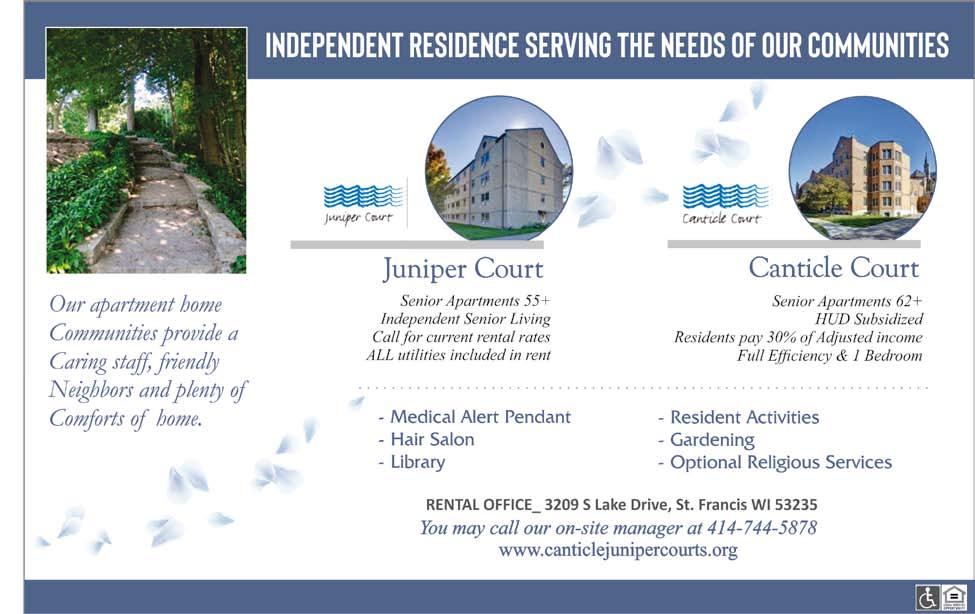
June 2024 MHL �� Gardening LIVE WELL
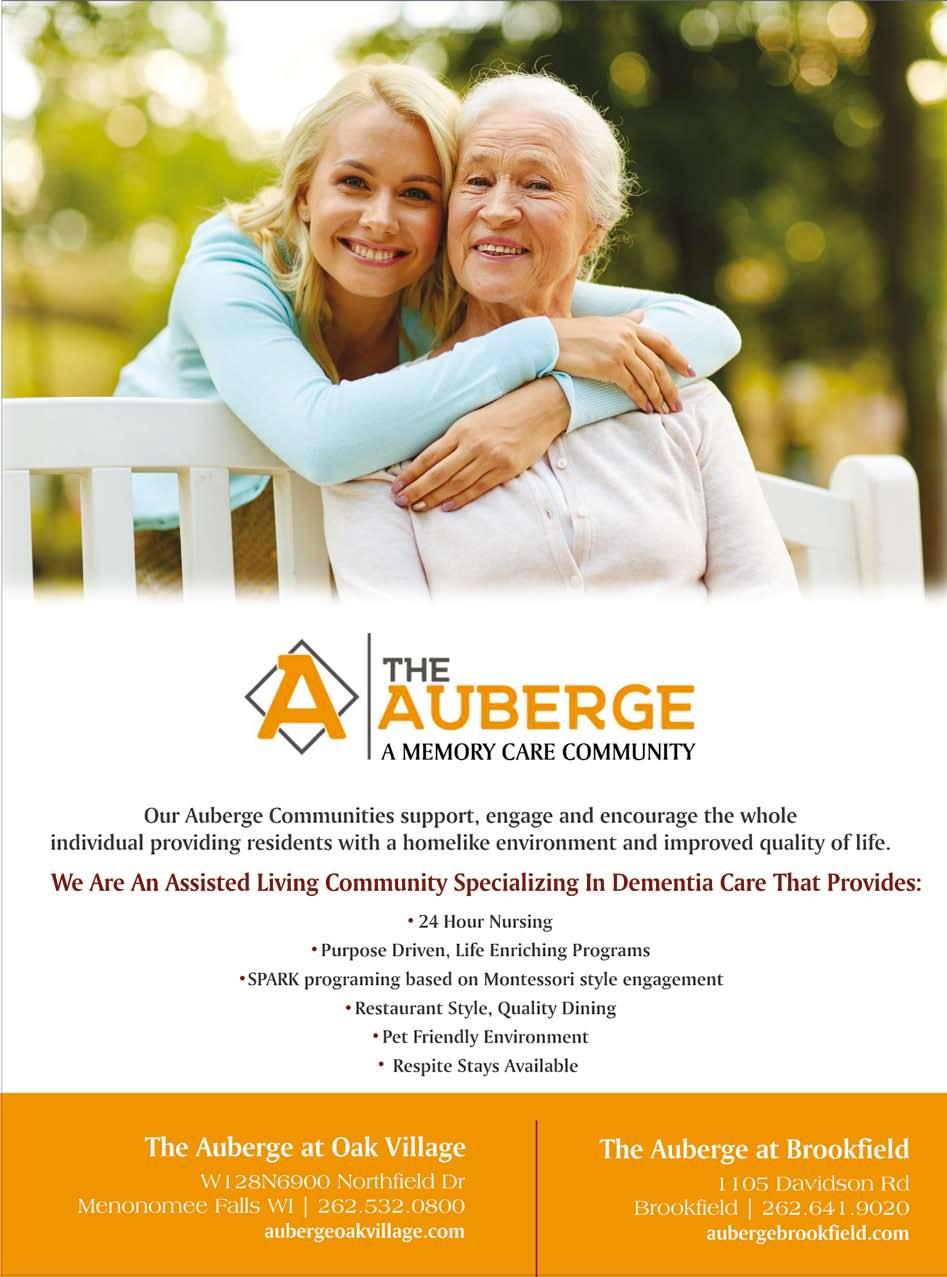
about more serious actions, like forgetting to pay a bill or leaving the stove on after supper? In order to compensate for forgetting, individuals with early Alzheimer’s may actually begin to engage in hoarding – the collection of things with little to no value – in order to keep track of objects, make them feel more secure, and deal with misplacing things and losing memories.4 Whichever memory lapse may be the case, your loved one will probably minimize the scope or impact of their forgetfulness – which plays directly into the next major sign: covering up. Covering-up. Senior adults, especially if they have a spouse, wish to remain independent. Dignity plays a large role in the lives of many senior adults, which means that hiding medical effects, especially ones associated with Alzheimer’s, is an attempt to prevent embarrassment and retain autonomy.3 Even more so, seniors will often go to great lengths to cover-up symptoms to prevent worry and alarm on behalf of their family. Are mom and dad limiting their visits to family and friends? Has an older loved one began to isolate themselves? Withdrawing from social and family events lowers the chances of symptoms being displayed and prevents the older loved one from experiencing confusion, thus preventing an embarrassing moment from occurring and preventing family from witnessing symptoms. This form of coverup can become habitual, going so far as to seep into the passions and interests of your loved one resulting in a refusal to commit to individual, family, or social activities.
Denial. The above signs are not fun to discuss, yet are necessary when dealing with a serious disease like Alzheimer’s. Your older loved one may immediately resort to denial, or fall back on it when confronted by the above two signs. While a completely normal response, denial nevertheless makes up the third major sign that a loved one is covering up symptoms. An extremely common phrase used by older adults is to declare that they had a “senior moment” when displaying symptoms. Self-reporting that they are “tired” or “stressed” may very well be true, but may also be telling signs of denial to downplay serious, routine symptoms of Alzheimer’s.
What do I do If I Notice These Signs? How do I Get Help?
Confronting an older loved one about Alzheimer’s does NOT need to be a depressing affair. As you already know, early detection is key. Remember, YOU know your older loved one the best and have the best insights into their personality. If the above signs begin to show, or if you witness numerous symptoms of the disease, it is vital to reach out to your loved one’s doctor to formalize diagnosis and treatment. If your loved one is still living independently, it may be time to have the talk about moving to a senior living community like Lumia in Mequon. Communities like Lumia specialize in memory care for seniors, a type of care that focuses on providing, “a safe, structured environment with set routines to lower stress for people with Alzheimer’s or dementia.”5 Different from assisted care homes, memory care communities like Lumia have specialized staff to assist seniors with dementia and Alzheimer’s each day. These kinds of communities support the independent nature of your loved one, while supporting their treatments and assisting them with their symptoms. Further information can also be found based on your location. Visit your county Aging and Disability Resource Center (ADRC) to find out more information and local services that may benefit your loved one. Remember, Alzheimer’s is a serious disease, but it can be managed. If an older loved one shows signs and symptoms, reach out for help and take it seriously.




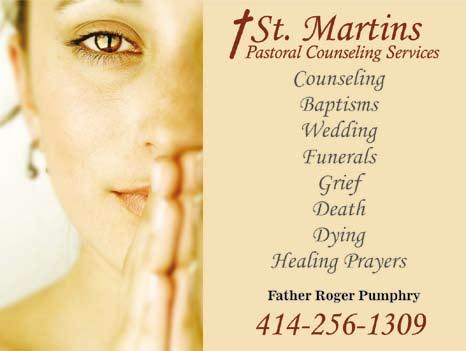




June 2024 MHL �� GUIDE<<page 30

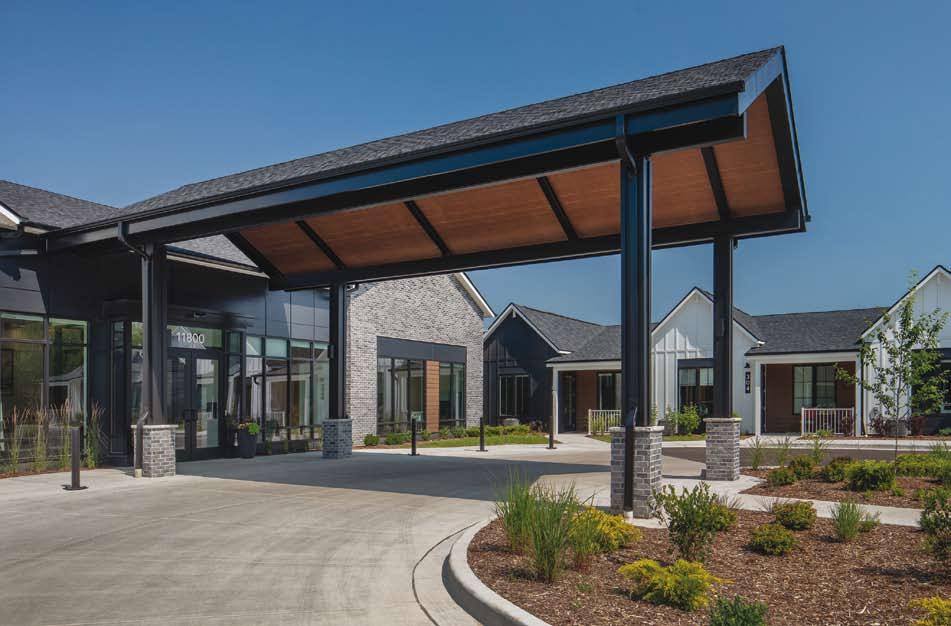


11800 W. Edgerton Ave. | Greenfield, WI 53228 | WWW.GREATLIFECOMMUNITIES.COM SENIOR LIVING REIMAGINED FOR THE NEXT GENERATION INDEPENDENT, INDEPENDENT+ AND ASSISTED LIVING CALL US TODAY 414.209.1999 for more information or to schedule a tour! Connected Ranch Homes Offering a Full Array of Resort Style Amenities. Private Front Entry Door and Patio. 2023 NOMINEE BEST NEW DESIGN
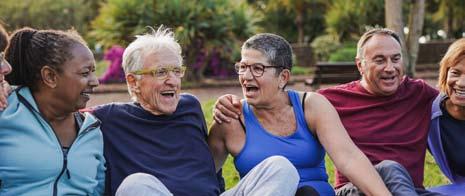
Having An Active Social Life is vital to your health and happiness
If you’re trying to decide whether assisted living is right for you, ask yourself the following questions:
Do you need more help than family and friends are able to provide? Are the activities of daily living becoming stressful or overwhelming? If family or in-home help is not able to bridge the gap, assisted living is an option.
Do you feel lonely or isolated at home? Having an active social life is vital to your health and happiness. Being alone much of the time is a recipe for depression. The social aspect of assisted living is a huge benefit. Good facilities offer a range of social and recreational activities. And the community environment also gives the opportunity to make new friends.
Do you worry for your safety? Perhaps your mobility is limited, making it difficult to get out of bed by yourself, for example. Maybe you’re afraid of what might happen if you fell and couldn’t get up, or experience another problem and couldn’t get help.
Are you tired of maintaining a home? There are a lot of responsibilities that come with living in your own home. Assisted living facilities can provide a home-like atmosphere, without the work of cooking, cleaning, shopping for groceries, and doing laundry.
Is transportation an issue? Perhaps you’re having trouble driving or can no longer drive. If public transportation or another alternative isn’t easy and convenient, you may be increasingly housebound. Assisted living facilities offer transportation, so you can get where you need to go without having to rely on friends and family.
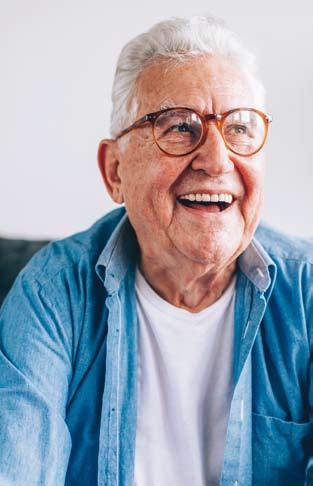
Signs that a parent or loved one might need assisted living
It’s not always easy to tell when your parent or another family member or loved one needs more help. The following warning signs may indicate that it’s time for a talk about assisted living.
The refrigerator is empty or filled with spoiled food or your parent is losing weight. These may be signs that he or she isn’t eating well because shopping or cooking is difficult.
You notice frequent bruises, although your parent may try to cover them up. This may be a sign of falling, or mobility and balance problems.
Your parent wears the same clothes over and over again or neglects personal hygiene. This can indicate that doing laundry and bathing is physically challenging.
The house and yard isn’t as clean and tidy as it used to be.
Your parent forgets things, including doctor’s appointments and when to take medication. This may be due to memory loss.
Your parent seems depressed. Depression is common in seniors who are isolated and alone.
You notice strange or inappropriate behavior. For example, your parent may dress inappropriately for the weather. This can be a sign that he or she is experiencing confusion.
Some families find a conference call is a good way to talk together about the pros and cons of each option. The goal of this call is to come up with a plan that works for everyone, especially your parent. If the decision involves a move for your mom or dad, you could, even from a distance, offer to arrange tours of some places for their consideration.
Experts advise families to think carefully before moving an aging adult into an adult child’s home. There are a lot of questions to consider, for example: Is there space in your home?
Is someone around to help the older person during the whole day?
What are your parents able to do for themselves?
What personal care are you willing and able to provide—moving your parent from a chair to a bed or toilet, changing adult diapers, or using a feeding tube, for example?
What kinds of home care services are available in your community?
What kind of specialized medical care is available nearby? Long-Term Care Planning
You can never know for sure if you will need long-term care. Maybe you will never need it. But an unexpected accident, illness, or injury can change your needs, sometimes suddenly. The best time to think about long-term care is before you need it.
Planning for the possibility of long-term care gives you time to learn about services in your community and what they cost. It also allows you to make important decisions while you are still able.
livingwesterly.com A senior living community where I can be free to be. Community Lifestyle LIVE WELL June 2024 MHL �9 Now Leasing- 262-737-5500








Alta Mira II offers one & two bedroom apartment homes for those 55 & older. Alta Mira II is a non-smoking community that was constructed with special features for those who may be deaf or hard of hearing. Alta Mira II offers an array of amenities and social activities for its residents. Income restrictions apply.
Bell Tower Place is a non-smoking community offering elegant one & two bedroom apartment homes. Located in a quiet, residential neighborhood you are still situated in close proximity to all the modern conveniences you will need to live an independent, maintenance-free lifestyle.
Cedar Glen offers spacious one & two bedroom apartment homes centrally located in Wauwatosa, just 10 minutes from all of your shopping & dining needs. A variety of activities, 24-hour emergency maintenance and on-site management allow for the independent lifestyle you deserve! Income restrictions apply.
Granville Heights offers one & two bedroom apartment homes in a non-smoking community. Centrally located, you will have easy access to churches, grocery stores, restaurants and more while enjoying a relaxed, maintenance-free lifestyle within the community. Income restrictions may apply.
High grove offers luxury one adn two bedroom independent senior apartments located on the Woodland Ridge Campus. Our spacious apartmetns incldue a patior
Our non-smoking community is the perfect place to call home.
Hill Crest, located on the Woodland Ridge Campus offers centrally located one adn two bedroom apartment homes fo rthe independent senior. In close proximity to all of your shopping, dining and entertainment needs, our social activities will have your social calendar full year-round. Income restrictions may apply.
Located on the Woodland Ridge Campus adjacent to the Towering Woods Nature Conservancy, Crestview offers one & two bedroom apartment homes in a non-smokin, pet-friemdly (restrictions apply) community. Enjoy an indepdendent lifestyle with 24-hr. emergency maintenance available. Income restrictions may apply.

40 MHL January 2023 Independent, Senior Communities Live your best life! Call for a tour today! Alta Mira II Menomonee Falls - 55+ 262-719-3884 Cedar Glen Wawautosa
55+ 262-719-3884 Bell Tower Place Franklin - 55+ 414-254-8410 Granville
Milwaukee - 55+ 414-357-6740
-
Heights
High Grove 414-541-3333 We invite to take a tour at any of our Horizon managed properties www.horizonseniorhousing.com Hill Crest* 414-541-3333 Crest View* 414-541-3333
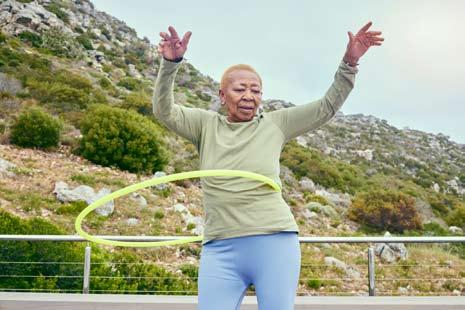
Real-Life Benefits of Exercise and Physical Activity
Research has shown that exercise is not only good for your physical health, it also supports emotional and mental health. You can exercise with a friend and get the added benefit of emotional support. So, next time you’re feeling down, anxious, or stressed, try to get up and start moving!
Physical activity can help:
Reduce feelings of depression and stress, while improving your mood and overall emotional well-being
Increase your energy level
Improve sleep
Empower you to feel more in control
In addition, exercise and physical activity may possibly improve or maintain

some aspects of cognitive function, such as your ability to shift quickly between tasks, plan an activity, and ignore irrelevant information.
The Mental Health Benefits of Exercise and Physical Activity infographic. Click to open webpage
Here are some exercise ideas to help you lift your mood:
Walking, bicycling, or dancing. Endurance activities increase your breathing, get your heart pumping, and boost chemicals in your body that may improve mood.
Yoga. This mind and body practice typically combines physical postures, breathing exercises, and relaxation.
Tai Chi. This “moving meditation” involves shifting the body slowly, gently, and precisely, while breathing deeply.
Activities you enjoy. Whether it’s gardening, playing tennis, kicking around a soccer ball with your grandchildren, or something else, choose an activity you want to do, not one you have to do.
Emotional benefits of exercise
Research has shown that exercise is not only good for your physical health, it also supports emotional and mental health. You can exercise with a friend and get the added benefit of emotional support. So, next time you’re feeling down, anxious, or stressed, try to get up and start moving!
Physical activity can help:
Reduce feelings of depression and stress, while improving your mood and overall emotional well-being
Increase your energy level
Improve sleep
Empower you to feel more in control
In addition, exercise and physical activity may possibly improve or maintain some aspects of cognitive function, such as your ability to shift quickly between tasks, plan an activity, and ignore irrelevant information.
Here are some exercise ideas to help you lift your mood:
Walking, bicycling, or dancing. Endurance activities increase your breathing, get your heart pumping, and boost chemicals in your body that may improve mood.
Yoga. This mind and body practice typically combines physical postures, breathing exercises, and relaxation.
Tai Chi. This “moving meditation” involves shifting the body slowly, gently, and precisely, while breathing deeply.
Activities you enjoy. Whether it’s gardening, playing tennis, kicking around a soccer ball with your grandchildren, or something else, choose an activity you want to do, not one you have to do.

June 2024 MHL 41 Memory AGE WELL

training in the comfort of your own living room or garage — at least until it’s time to progress to heavier weights than you’d find in the typical home gym.
A suspension system like TRX or a set of resistance bands will come in handy if you want to strength train at home, as will dumbbells in a couple of different weights — a relatively inexpensive investment that will serve you well for workouts to come.
Combine these five exercises for a simple at-home strength-training routine.
Body-Weight Exercises to Build Strength
Craft a circuit of body-weight exercises for a full-body strength workout you can do at home — or anywhere.
Yes, you can get stronger with zero equipment. Body-weight movements like squats, mountain climbers and push-ups can help you burn calories, shed body fat and build muscle — and you can do them just about anywhere.
“Body-weight exercises can definitely help you get fit without a gym,” says Gretchen Raddatz, CPT, master coach for Row House. “All you need is a little space.”
Start with 8 to 10 reps of three of your favorite body-weight moves to create your own circuit, and remember to still take days off, Raddatz says. She recommends giving your muscles 48 hours of rest between higher-intensity bodyweight workouts.
Mix and match from this list of the 18 best body-weight exercises for your next equipment-free strength-training session.
The Best Resistance Band Strength-Training Exercises
A trusty resistance band provides an inexpensive way to shake up your strength-training routine.
Resistance bands are portable, inexpensive and adaptable; you can use them nearly anywhere to add variety to your strength-training routine, which keeps your muscles growing by challenging them in new ways.
“With free weights, the force is always downward, and we’re fighting to move up, but with resistance bands, we can change up the lines of force,” K. Aleisha Fetters, CSCS, tells LIVESTRONG.com. “Also, resistance bands provide variable resistance: How hard we have to work changes as we stretch the band in each rep, which is another way to mix things up.”
With a couple of bands in different sizes and levels of resistance, you’ll be able to recreate a wide range of traditional gym exercises, like lat pulldowns, good mornings and overhead presses.
Invest in a band or two and give this full-body resistance band workout a try.
How to Strength Train With Dumbbells
You can get a full-body strength-training workout with just five exercises and one pair of dumbbells.
Thanks to their many different shapes, sizes and weights, dumbbells make it (relatively) straightforward for beginners and experienced lifters alike to strengthen from head to toe.
Plus, they’re the perfect tool for continuing to challenge yourself as you get stronger, a concept known in the strength-training world as progressive overload. The idea is to gradually increase the stress on your body, which forces your muscles to adapt and grow stronger in response.
Building that kind of strength takes a little fine-tuning. As your dumbbell workouts progress, you’ll need to tweak the basic structure of reps and sets to continue toward your goals.
Target all your major muscle groups with these five essential dumbbell exercises.
The Best Kettlebell Exercises for Strength
Focus on nailing perfect form with kettlebell exercises before leveling up in weight.
Kettlebells earned their trendy reputation for good reason: The funky-shaped weights are impressively versatile.
“Not only can kettlebell workouts build strength and endurance, but they are great for balance, stability and coordination,” says Katie Kollath, CPT, founder of Barpath Fitness. “In fact, you can get in a great workout with just a single kettlebell.”
Don’t be intimidated by the unusual moves people do with them, though. “Beginners can and should use kettlebells,” Kollath says. With a little form practice — and patience — even newbies can build muscle mass, gain strength and shed body fat with kettlebells.
This article origanally appeared on Livestrong.com.












June 2024 MHL 4� Steeple View An Independent Senior Community Embracing Christian Values 414-525-5500 Voted Top Senior Living Facility for the fourth year in a row! Enjoy secure, carefree, independent living for active seniors in a caring, Christian atmosphere. Relax with the comforts of home without the burden of home ownership! Our spacious 1, 2 and 2 bedroom + den deluxe apartment homes start at $873 per month with a 90% refundable entrance fee required. Call to schedule your tour of ! 414-525-5500 Make YOUR MOVE to the Luxury Senior Living of STEEPLE VIEW! enjoy their life at Steeple View. 12455 West Janesville Road, Muskego 414-525-5500 | steepleview.org | info@steepleview.org 900
TRAINING<<page 8





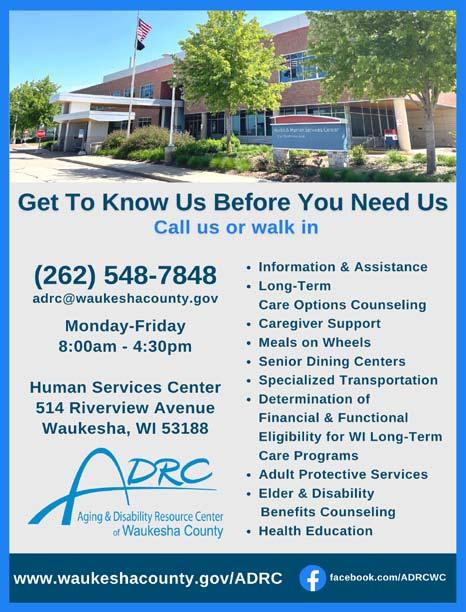

Tips For Boosting OVERALL HEALTH
There are a number of small and simple strategies that you can incorporate into your daily routine to stay as healthy as possible.
There are a number of small and simple strategies that you can incorporate into your daily routine to stay as healthy as possible.
Getting regular exercise and eating a balanced diet, filled with fruits, vegetables and whole grains, are key strategies to maintaining good overall health.
Moderate exercise, for example, can slash your risk of heart disease when performed around three times a week, Healthable explained.
And eating a balanced diet can reduce your chances of developing other chronic conditions such as diabetes and certain types of cancer. Additionally, as explained by Shape magazine, exercise can help improve your mood, thanks to the release to endorphins – a chemical that boosts feelings of euphoria.
However, exercise and a healthy diet are the not the only ways you can protect your health. There are a number of simple strategies that you can incorporate into your daily routine to stay as healthy as possible.
Eager to learn more? We’ve got a run down of some the best tips for boosting your overall health:
Opt for white meat
A great way to cut down on the amount of saturated fat you eat is to swap out red meat for white meat, Everyday Health explained. For example, when heading out to eat, opt for the turkey burger over the traditional beef patty. And while shopping at the store, consider leaner cuts of turkey or chicken over beef steaks. White meats are far lower in fat and can still provide the essential proteins and B vitamins you need to maintain a balanced diet.
Watch out for hidden sources of fat
High levels of saturated fat can also be found in the add-ons to meals that are otherwise nutritious – think dress-
ings for your salad, the skin on certain cuts of meat, cream in your morning coffee and so on, Family Doctor detailed. If you use fuller fat products like these routinely, it could negatively impact your efforts to consume a healthier diet. To avoid this, consider opting for low-fat alternatives where possible. Cutting down on dressings or skipping them altogether, although a small step, can also make a positive difference.
Embrace deep breathing
Given how hectic and fast-paced daily life can be, it’s likely that you will experience stress from time to time: Maybe you have a big project at work with the deadline fast approaching, or perhaps you have a big summer party to plan for. Whatever the reason, one way to ease stress and help yourself feel better is by embracing deep breathing. Simply take a couple of minutes to yourself, every few hours or so throughout your day, and breathe in a deep and measured way, exhaling in and out slowly. Care2 explained that this strategy is helpful because it can reduce your levels of stress-inducing hormones that can engender panic and anxiety.
Keep your mind active
Playing games on your computer, tackling a crossword, reading a good book and even meeting up routinely with friends – these activities are fun, engaging and good for the soul. They can also help keep your brain healthier, Dr. Dan Rutherford explained, in an interview for The Telegraph. Indeed, the Alzheimer’s Association explained that studies have shown that an active mind is less likely to succumb to cognitive decline and dementia, so daily brain exercise is an important way to stay as sharp and healthy as possible.
Eat more fiber
Eating a diet that is rich in fiber can help improve your digestion and reduce your risk of health problems such as irritable bowel syndrome and hemorrhoids, Everyday Health explained. Examples of foods with high levels of fiber include various whole grains, beans and a range of vegetables.
Health & Wellness AGE WELL 44 MHL June 2024
VISION>>page 15
within days and typically reaches its optimal level after 3-4 weeks. Will I ever need cataract surgery again?
David Scheidt, OD: No. Once a cataract is removed, it cannot grow back. Occasionally, however, the remaining sac or capsule that holds the lens implant in place becomes cloudy through a process of normal cell regeneration—causing vision to blur. If this “posterior capsular opacification” (or, back capsule clouding) occurs, clear vision is easily restored with a painless, 30-second, outpatient laser procedure.
Does medical insurance cover all the costs of cataract surgery?
Brett Rhode, OD: Cataract surgery with a standard lens implant is covered by most insurances and Medicare as long as you meet the guidelines. However, you are still responsible for co-payments, co-insurance, and deductibles that are unique to your plan. Advanced technology IOLs (for correcting astigmatism or providing multifocal capabilities) are NOT covered by medical, vision or any other insurance plans because reducing dependence on glasses is not considered a medical necessity. For these lenses, insurance and Medicare still pay for the cataract surgery itself, but you are responsible for the cost of the advanced technology lens and any special testing involved.
The Eye Care Specialists team quoted above has offices in downtown Milwaukee, Wauwatosa and West Allis. For a free copy of their detailed booklet on cataracts, or other booklets on diabetic eye disease, dry eyes, glaucoma or macular degeneration, visit their website at www.eyecarespecialists.net.
CALLING<<page 20
you’ve gotten wrapped up in your thoughts again (it’s inevitable and not a sign you’re doing anything wrong), then gently return your attention to your body.
Study your body’s responses like a scientist.
There are a lot of nuances to what our bodies can tell us beyond simply “yes” and “no.” Observing carefully and taking notes over time can help us expand our vocabulary. By being curious, we can learn the difference between common misinterpretations, such as fear versus an actual “no,” or what’s habitual and familiar versus a true “yes.”
Experiment with making decisions based on your body’s wisdom and track what happens.
Start with small experiments where you decide what to eat for lunch or how to spend a free evening based on what your body’s saying yes to. Write down the decision you made, what body sensations led to that decision, and what happens, both in terms of external results and how you feel. Work your way up to bigger decisions with more at stake. Over time, you’ll gather evidence about what happens when you listen to your body and likely learn to trust it more as you see for yourself what happens when you do.
Some of the decisions I’ve made based on my body’s wisdom felt scary and involved huge investments of time and money—like moving across the country back to my hometown, buying and renovating a house, or changing careers and getting credentialed as a coach. Many contradicted conventional wisdom, logic, or the advice of those around me. All of them resulted in greater freedom and fulfillment and took me closer to what I longed for, even if I had no idea how they would at the time.
That’s the beauty of our bodies—they know things our brains don’t. I’ve found no better way to create a unique and meaningful life that allows us to contribute our greatest gifts to the world than by incorporating that wisdom into all that we do.
About Meredith Walters
For as long as she can remember, Meredith Walters, author of This Animal Body, has wandered in forests looking for animals and magic and writing stories about what she found. Her life adventures have included volunteering for a nonprofit in Mexico, studying literature at UC Berkeley, getting an MBA, and working for a social enterprise startup. Her short story collection, The Adventures of Little One, was published in 2018. Today Meredith lives in Atlanta, Georgia, working as a life/career coach helping others rediscover their lost magic and once again writing stories about what she finds on her wanderings through the woods.
The Adventures of Little One: Eye-Opening Tales of the First Hero’s JourneyA fun and entertaining way to learn how to overcome some of the most common obstacles to discovering what you’re meant to do in the world, The Adventures of Little One tells the tale of the first hero to go on a quest to find his calling. The stories follow him as he confronts ogres, battles demons, and tries to solve the mystery of the Serpent God, all the while struggling to overcome many of the same challenges we all face as we figure out what we’re meant to do in life.

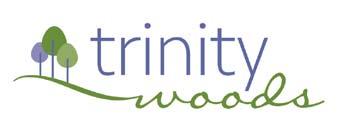



June 2024 MHL 4 � Experience a unique senior living lifestyle of well-being, connectedness and convenience in a vibrant intergenerational setting. Tour Today! Call us at 414-625-9909. 2462 North Prospect Avenue, Milwaukee, WI 53211 milwaukeecatholichome.org With more than 100 years of experience, Milwaukee Catholic Home has now been recognized as a top Life Plan Community for both Short-Term Rehabilitation and Long-Term Care. To learn more or to schedule a tour, call 414 -220-3216 or visit us at milwaukeecatholichome.org!
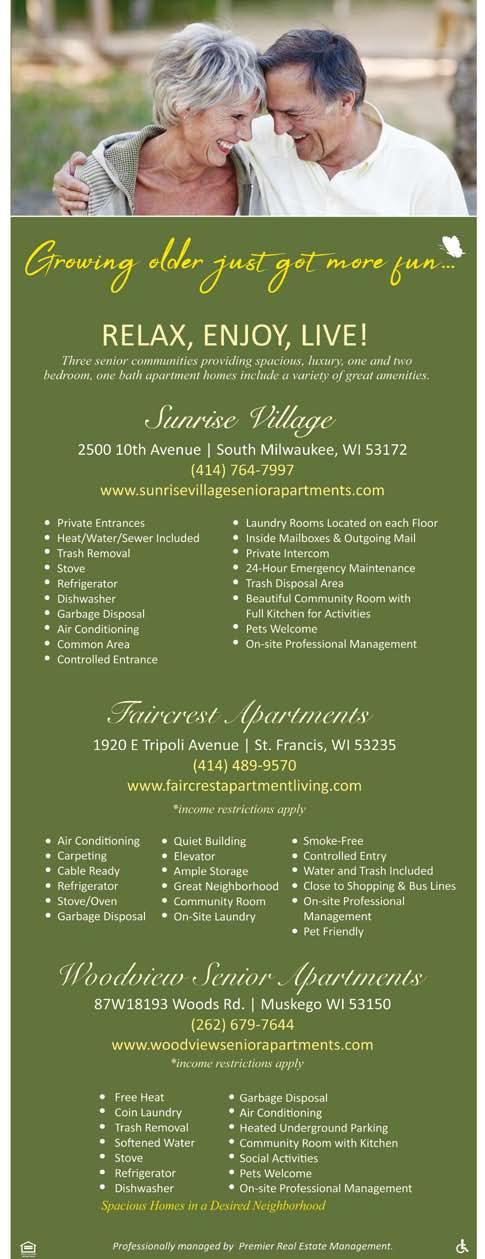
Repeat 5 to 10 times.
When you’re sitting and slouched forward, the diaphragm (your main respiratory muscle) isn’t in the best position for optimal function. So sit up tall and practice diaphragmatic breathing (aka belly breathing). Focusing on your breath will also bring awareness to your posture.
Start either seated, lying on your back or standing and place one hand on your lower abdomen and the other on your chest.
Breathe into your belly so the lower hand rises first as you inhale. Practice belly breathing for two to five minutes a few times a day.
Tip
Notice if your shoulders rise and fall with your breath. Often times, people overuse these secondary respiratory muscles instead of using the diaphragm to breathe fully.
Locust Pose (Salabhasana)
Perhaps you’ve heard the phrase, “pinch your shoulders together like you’re squeezing a pencil between them,” to correct your posture. Locust pose does something similar but also brings awareness to what your shoulders are doing and activates your upper back muscles, Vincent says.
Begin lying face down with legs together and arms by your sides, palms down.
Inhale as you lift your upper torso away from the floor.
Pull your shoulders back by activating the muscles of your upper back.
Hold for a few breaths, then lower back down.
T-Spine Opener
If your upper back is out of alignment, you’ll likely experience problems in your neck and lower back as well, says Los Angeles-based chiropractor Robert Bates. And that can lead to imbalances and movement-pattern problems. The Tspine opener helps loosen and realign your spine.
Lie on your side with your knees bent to 90 degrees and your arms outstretched, hands together. Place a towel or blanket under your head for support if you like and a small pillow or yoga block between your knees.
Keep your knees in place as you inhale and reach the top arm up and over to the other side so your arms are in a T shape.
Exhale and return to the start position.
Perform five to 10 reps on each side.
Proper curvature in you spine provides structure and function to the body and acts as a shock absorber for motion. “If a segment of the spine is stuck, it’s not allowing proprioception to be generated, nutrients can’t flow to brain and throughout the body and stress hormones are produced,” says Bates. Counteract all of that with this dynamic stretch.
Begin on your hands and knees in a neutral spine position.
Exhale as you fully round your back, pull the belly button in toward your spine and tuck your chin toward your chest.
Starting at the tailbone, release one segment of your spine at a time, relaxing through the lumbar spine, thoracic spine (mid-back) and finally, your cervical spine as you lift your chin upward into full flexion.
Then, starting at the tailbone again, reverse the motion until you come back to the starting position.
Be aware of what segments feel stuck. Breathe into these spaces and remember to move slowly.
What are the health benefits of yoga?
Research suggests that yoga may:
Help improve general wellness by relieving stress, supporting good health habits, and improving mental/emotional health, sleep, and balance.
Relieve neck pain, migraine or tension-type headaches, and pain associated with knee osteoarthritis. It may also have a small benefit for low-back pain.
Help people with overweight or obesity lose weight.
Help people quit smoking.
Help people manage anxiety symptoms or depression.
Relieve menopause symptoms.
Be a helpful addition to treatment programs for substance use disorders.
Help people with chronic diseases manage their symptoms and improve their quality of life.
46 MHL June 2024
EXERCISE<<page 32

Here are 3 simple steps to to quickly (and literally) transform any area of your life
1. Schedule time for reflection ASAP
Ask yourself these 4 questions:•Are you settling for mediocrity in your life?
•Are you in denial about it?
•What are the long-term consequences if you don’t make a change?
•What can you do now to make positive changes in the areas that that matter most to you?
2. Ask people who know you for honest feedback
Ask someone who knows you from way back. Here are some question ideas.
Hey, what is the biggest thing that you see about me that I need to change? What do I need to change? And please be honest with me and I don’t care if you’re brutally honest.
3. Implement one change
Once you get clear about the changes you need to make, maybe it’s one, or more than one. Start with one. You don’t need to overwhelm yourself. Make that one change. Schedule recurring actionable changes.
With love & gratitude,
- Hal www.miraclemorning.com
HEAR<<page 33
joy your favorite warm-weather activities while safeguarding the performance and longevity of your hearing aids.
Professional Guidance and Support
Remember to consult with your hearing health professional for any questions you may have. We’ll offer more information and advice for managing your hearing aids in warm weather. We can provide specific recommendations based on your device model, lifestyle, and activities. We also offer comprehensive cleaning, maintenance, and repairs for improved functionality.
When you understand how heat can impact your hearing aids, you can implement strategies to keep your hearing aids in great condition. Regardless of the weather, visit us for ongoing support. We’ll help you improve the lifespan of your hearing aids and get the most out of your devices.
STRESS<<page 5
reduce their stress levels. Aside from being a good form of aerobic activity, it’s also an activity that can be done in almost any location. You could take a walk or jog around your block, in a local park, or on a nature trail. Check out our tips for starting a walking routine (which can also be applied to jogging).
Interval training
If you’re looking for a more intense workout, interval training can be one of the most effective exercises to reduce stress. High-intensity interval training (HIIT) is a form of exercise that involves short bursts of intense activity followed by brief periods of rest. It’s a great option for releasing a lot of pent-up energy and sweating the stress away!
Dancing
Dancing is a great way to relieve stress since it has physical, mental, and even emotional components. It gets your body moving and grooving as you connect with the music and the people around you. (Solo dance parties in your house are also great, of course!) Check out these six kinds of dance that also double as great exercises.
Experiencing a lot of stress can feel overwhelming and discouraging, but the right exercises and activities will help you manage it more effectively




June 2024 MHL 4�
































































































































































































































